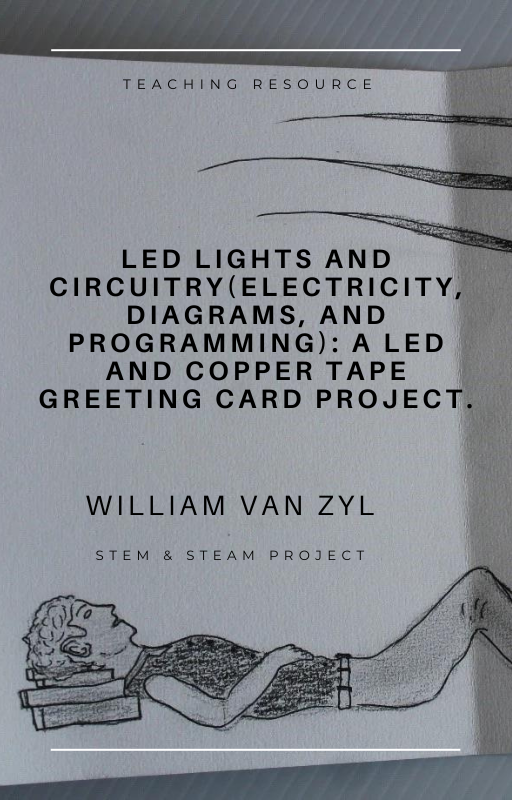
By William Van Zyl
First published on
Second publishing 2021.
Edited in 2023.
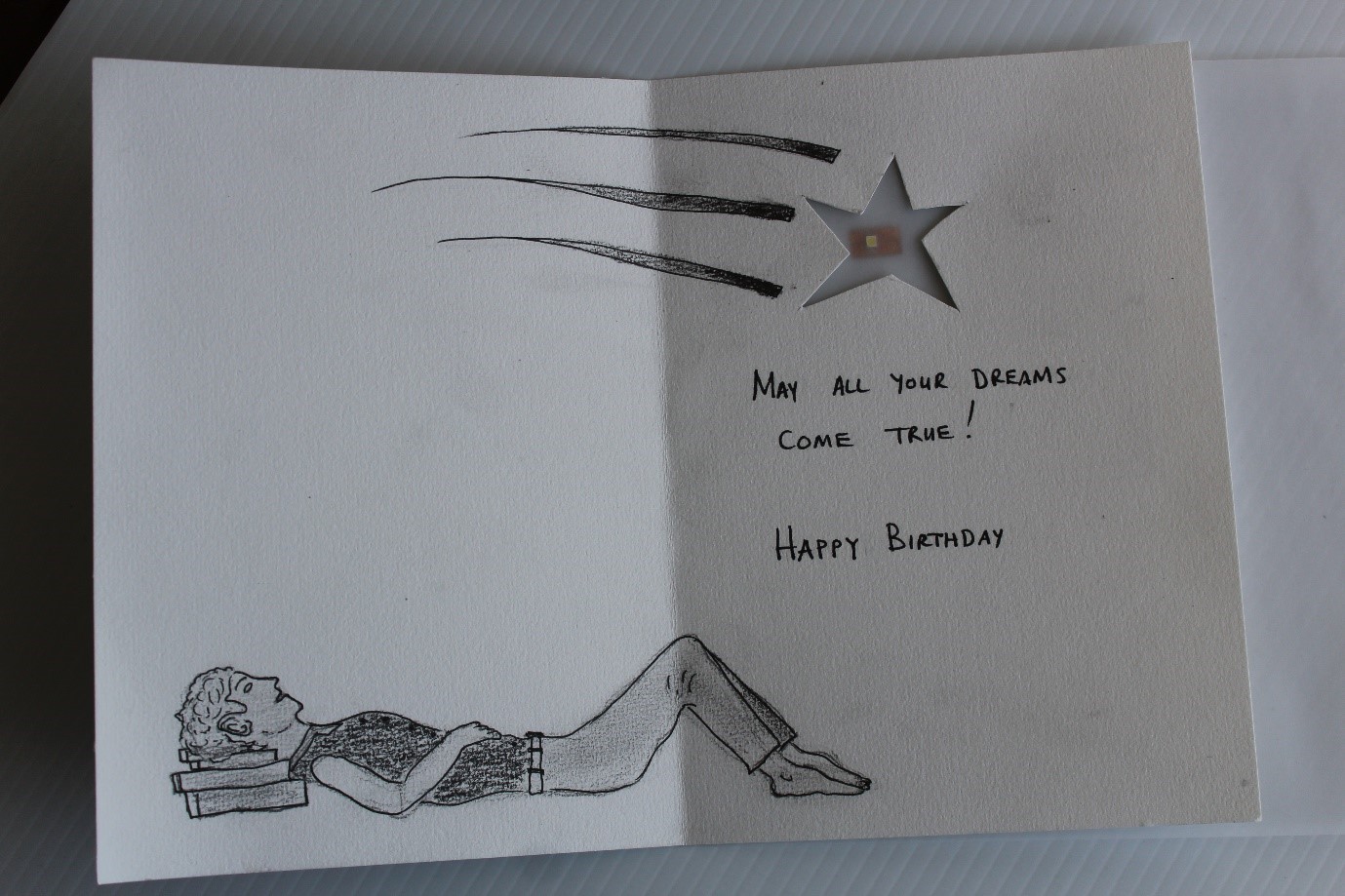
Table of Contents
Synopsis
This resource introduces a simple lesson of cardmaking with electrical circuits. STEM & STEAM focus. The project – a greeting card – includes cardboard, and an elementary electrical circuit running on 3 Volts (coin battery). The sticky copper strip circuit for the card involves the 3-Volt battery, a Led (light), and a switch. Arts and crafts are used to create the artwork – for example, watercolours, ink sketching, and more. The resource then progresses in discussing more advanced digital components like microprocessors (Microbit, Picaxe, Raspberry Pi, and Arduino). These sophisticated electronic devices could be included to produce a greeting card with more functions or a next project. The lesson encompasses integrated learning, critical thinking and global citizenship. A Tinker Space – located in the corner of a classroom – would be most beneficial so students can experiment with their ideas. Essential hand tools (scissors, pliers, side cutters, etc.) and a soldering station would be required for tinkering and creating quality projects. The focus is on Junior high school Design and Visual Communication, Technology and Digital Technologies. However, the resource is suitable for senior-primary school students.
Learn Technology through Arts and Crafts.
Lesson objectives:
1. Research and investigate simple electrical circuits
2. Design a simple greeting card containing a Led light (or more) that could light up
3. Develop artistic skills (arts and crafts). Explore cardmaking ideas
4. Learn how a coin battery, copper tape (sticky) a switch, and a Led light can be connected into a working electrical circuit
5. Extension of the basic lesson: Once students understand the basics they are inspired to explore microprocessors (like a Picaxe, Microbit, Raspberry Pi, and Arduino). Students could be challenged to include computer programming into a greetings card (advanced lessons to follow). See the ebook by the author – a full extension into microprocessors/pocket computes, e-textiles, are provided and much more.
* Basic lesson is suitable for year 12-year-old to year 15-year-old students. Teachers could develop the basic lesson into a more challenging Digital Technology, DVC, Digital Art, or Technology Lesson.
PRIMARY SCHOOL STUDENTS: This lesson is also suitable for younger students (senior primary school)
SIMPLE GREETING CARD
Including LED lights, 3 Volt battery, copper tape, microprocessor (Picaxe – optional), and artwork (pro-markers, watercolours, acrylic paint, pastels, aquarelles, etc.) to the greeting card.
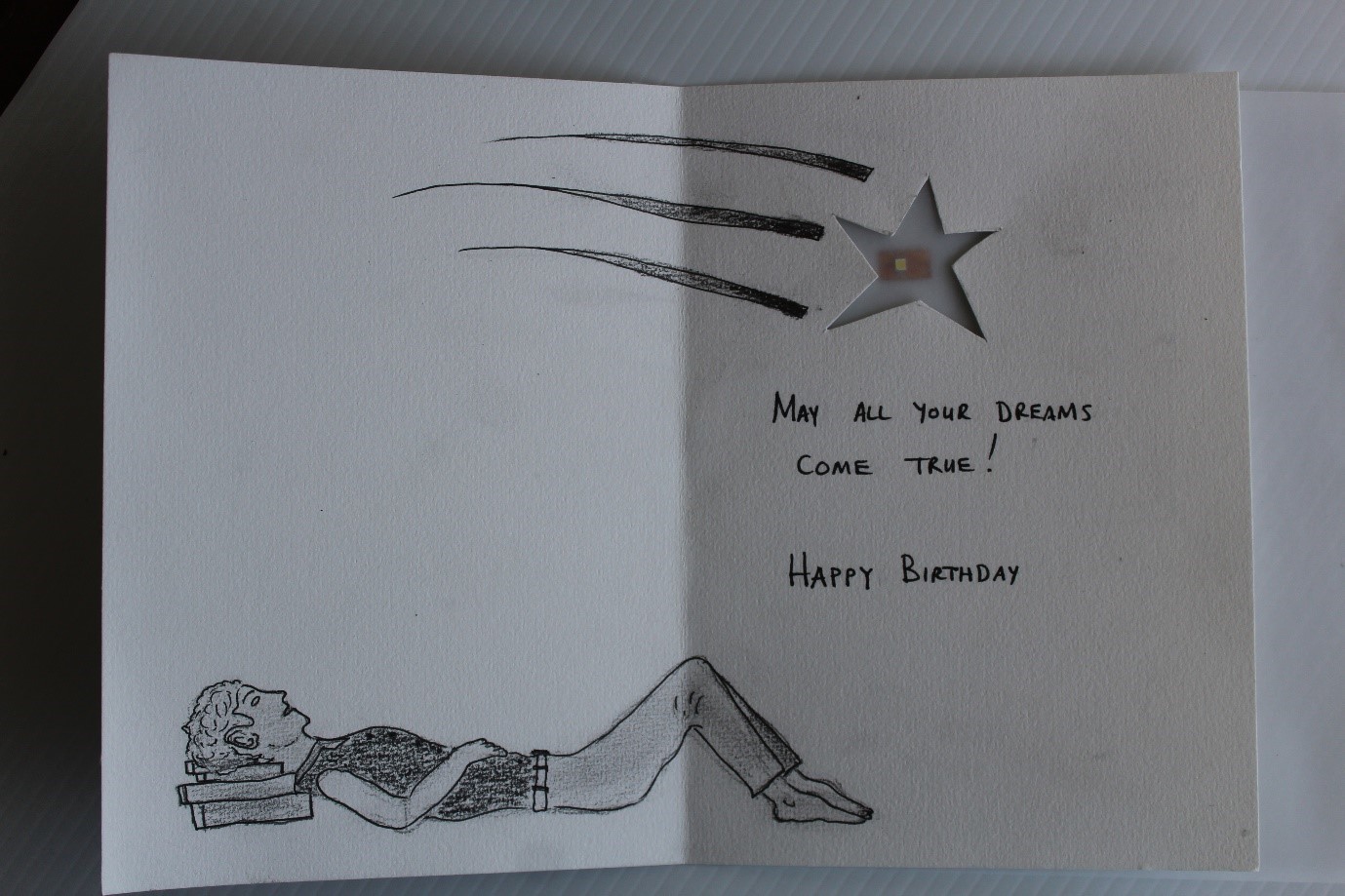
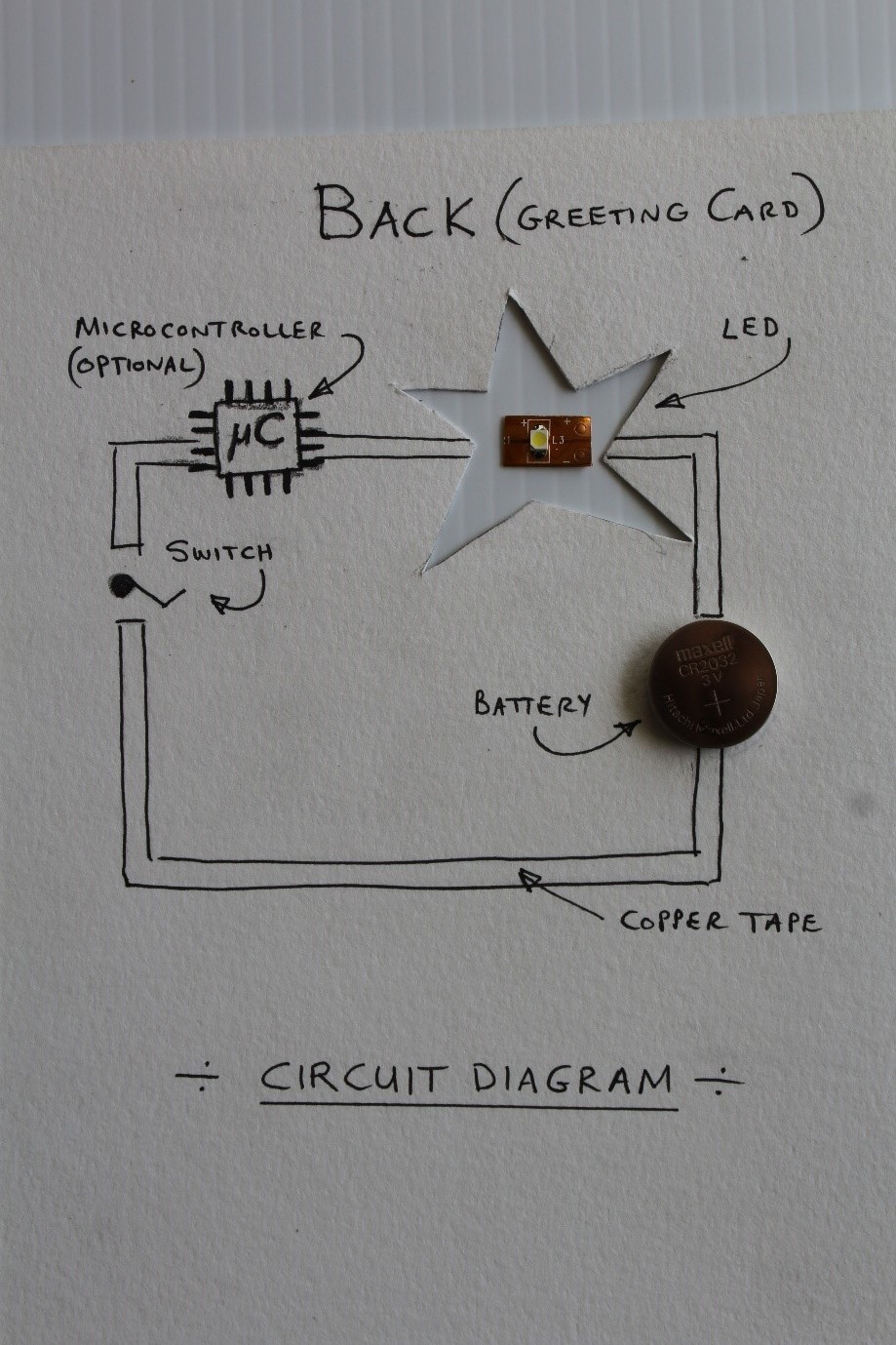
DVC NCEA LEVEL 1 CREDITS (CONTEXT NEW ZEALAND SECONDARY SCHOOL): 16-year-old students.
Students are able to accumulate several NCEA Level 1 credits. YEAR-LONG PROJECT: Students will continue with this product design – and the extensions of the lesson – throughout the year (add, refine and tweak). Students will explore the Picaxe, Microbit, Raspberry Pi, and Arduino. These microprocessors could be included in a project like a more challenging greeting card. For example, computer programming and robotics (led light, sound, movement, and more).
DESIGN AND VISUAL COMMUNICATION (NZ)
ACHIEVEMENT STANDARDS: Total of 23 Level 1 credits
DVC NCEA LEVEL 1 (NEW ZEALAND CURRICULUM)
DESIGN AND VISUAL COMMUNICATION
ACHIEVEMENT STANDARDS: Total of 23 Level 1 credits
DVC NCEA LEVEL 1 (NEW ZEALAND CURRICULUM)
91063 Produce freehand sketches that communicate design ideas – 3 credits (externally marked) – DVC
91067 Use the work of an influential designer to inform design ideas – 3 credits (internally marked) – DVC
91068 Undertake development of design ideas through graphics practice (stakeholder feedback) – 6 credits (internally marked) – DVC.
91069 Promote an organized body of design work (Google Slides) to an audience using visual communication techniques – 4 credits (internally marked) – DVC
91050 Demonstrate understanding of the role of subsystems (electrical diagram) in technological systems – 4 credits (externally marked) – Generic Technology
91077 Demonstrate understanding of basic concepts used in design and construction of electronic environments – 3 credits (internally marked) –Technology
Contents of this resource:
LED LIGHTS AND LIGHTING (ELECTRICITY, DIAGRAMS, AND LIGHTING): LED, BATTERY, AND COPPER TAPE GREETING CARD. Page 2
The brief Page 4
THE LAYOUT OF YOUR PRESENTATION, INCLUDING THE GREETING CARD: 5
Achievement Standards (from NZQA website) 9
Background of the incandescent bulb and LED LIGHTS: 12
WHAT IS AN LED LIGHT?. 15
ENERGY EFFICIENCY OF LED’S. 15
WHAT IS A DYNAMO?. 18
Teacher’s experience with teaching students about LED’s: 21
List of Ideas for LED lights and sound (basic electronics) projects: 23
Powered sketchbook: Video. 24
FLASHING LED GREETING CARD PROJECT: Integrated learning. 24
Students love having fun with circuits, LED lights, switches, buzzers and microcontrollers. 25
How to create the greetings card: 32
OPTIONAL: PICAXE. 36
Create movement (vibrating) for a greetings CARD ‘Washing machine.’ 39
CHIBITRONICS: 40
LAWN FAWN: 41
ALTERNATIVE TO COPPER TAPE: A ‘COPPER PEN’ (BRAND – CIRCUIT SCRIBE) Page 42
THE BRIEF
Situation: You are interested in simple electrical circuits. You have an idea to create a greeting card that contains some 3-volt electricity (‘coin battery’). Use LED lights to light up some of the artwork on the card. Switch – when you bend the corner of the card the copper tape will, make contact with the battery and turn the LED on. See the videos and instructions in this lesson for details on the assembly of the card and the switch.
Brief: Design and make a simple greeting card with a battery and LED light. For example, a BIRTHDAY CARD.
Specifications:
· SIZE OF CARD: Standard size greeting card (about 100 mm x 150 mm). Typical Merry Christmas or Happy Birthday card.
· COMPONENTS: Sticky copper tape (5 mm wide- peel back off), battery (3-volt) to back of card with a LED light, and LED light switch (bend corner – bottom right).
· A MOCKUP CARDBOARD CARD WITH A DIAGRAM SKETCHED ON THE BACK: This is part of the planning – make one and see how it will work. Ask the stakeholder (teacher and/or a friend in class) how you could improve. If you have made a mistake (or something is not working out ok) type up the modifications. You get credits for this process of typing up the modifications. The heading for this step is: ‘Modifications to my mock-up greeting card.’ Everything you do must be documented in Google Docs (Google Slides). Share with the teacher on Google Docs.
· PLANNING: Plan and draw the circuit on a separate piece of paper first
· ARTWORK: Create artwork at the front and middle of the card. Media of your choice: pro-markers/water-paint/acrylic paint/colour cardboard/soft pencil/etc. You could do this in the Art class – ask your Art teacher permission.
· COVER FOR THE ELECTRONICS (TO MAKE IT LOOK TIDY): Double-sided tape and cardboard as a backing (cover) to the back of the card (‘lid’). To cover the electric circuit and components
· ENVELOPE: Make a simple envelope for the card. Use drawing paper – available in class.
THE LAYOUT OF YOUR PRESENTATION, INCLUDING THE GREETING CARD:
· Do research on simple electrical diagrams – paste it into a Google Slide or Doc
· Do research on copper tape & LED greeting cards – paste it into a Google Slide or Doc
· Design your mock-up on a brown cardboard card (testing your ideas). Draw the diagram on the back and plan your artwork on the card.
· Share your card with a friend or the teacher
· Type up the changes, improvements, and modifications.
· Cut the final greeting card from white or coloured cardboard. Size: about 130 mm X 200 mm
· Design your card – copper tape, LED & battery (circuit). Write your message on the inside and the main label in the front. For example HAPPY BIRTHDAY or MERRY CHRISTMAS.
· Draw your electrical diagram at the back of a piece of cardboard greeting card size
· Plan and do the artwork (front, middle and back)
IMPORTANT: VIEW THIS TUTORIAL BEFORE YOU CONTINUE TO READ FURTHER
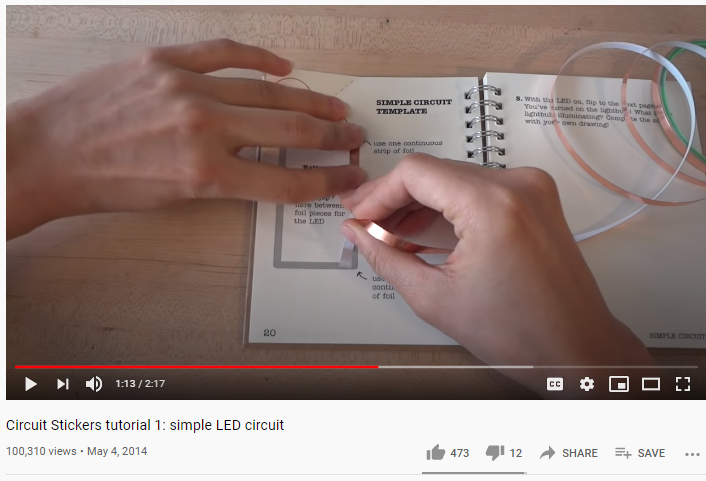
DESCRIPTION (taken from YouTube): Title: Circuit Stickers tutorial 1: simple LED circuit
Circuit Stickers tutorial 1: turn on a single LED light Tutorial page: http://chibitronics.com/simple-circui…
We use the template in chapter 1 of the Circuit Sticker Sketchbook: template: http://chibitronics.com/wp-content/up…
Full book: http://bunniefoo.com/chibi/sketchbook…
Materials: 1 LED sticker 1 X coin cell battery 3 volts 1 binder clip conductive copper tape scissors You can find circuit stickers at chibitronics.com, along with more tutorials like this one!
Typical circuit illustration on the back of the card:
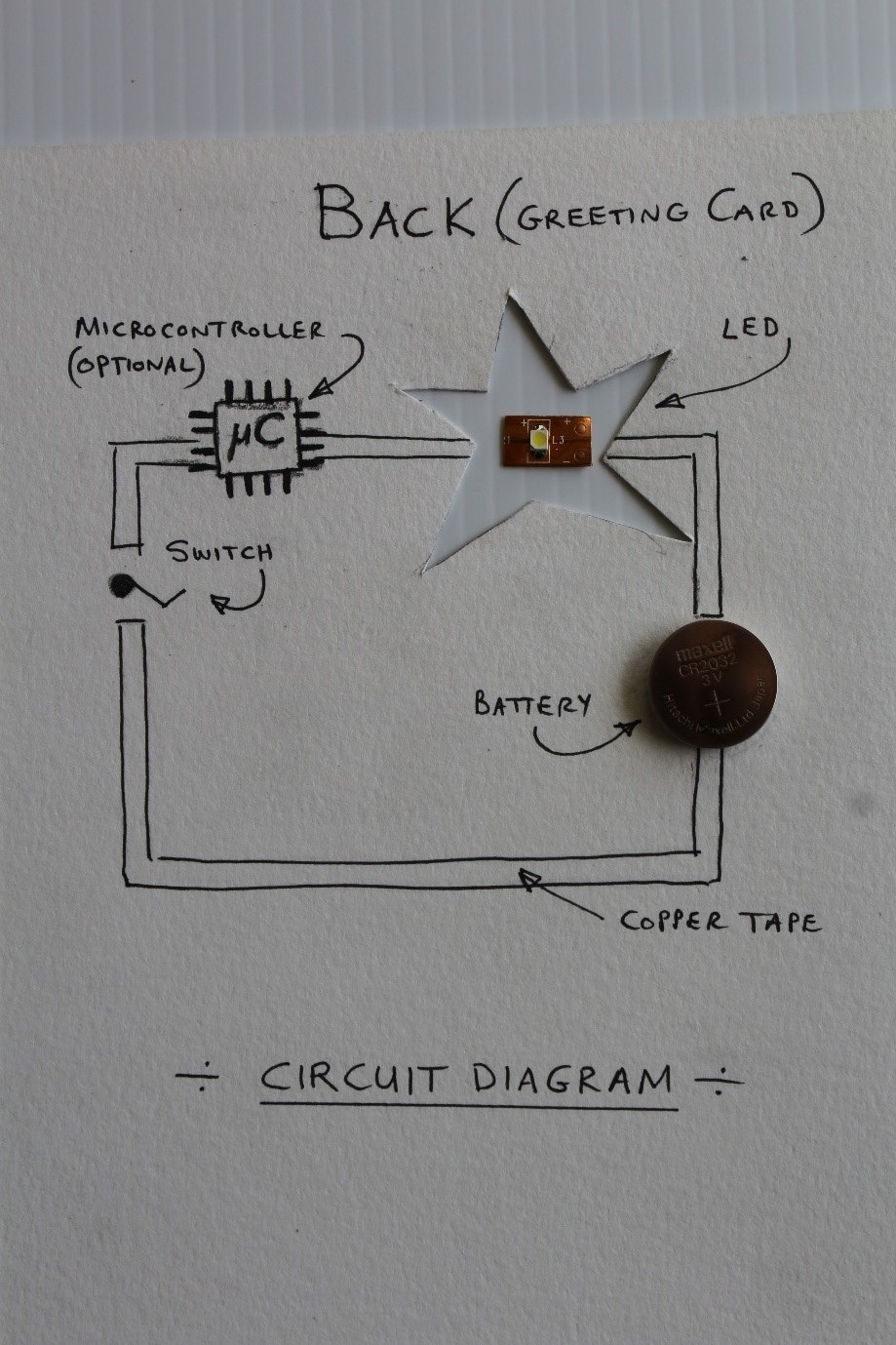
Freehand sketch: Schematic Diagram.
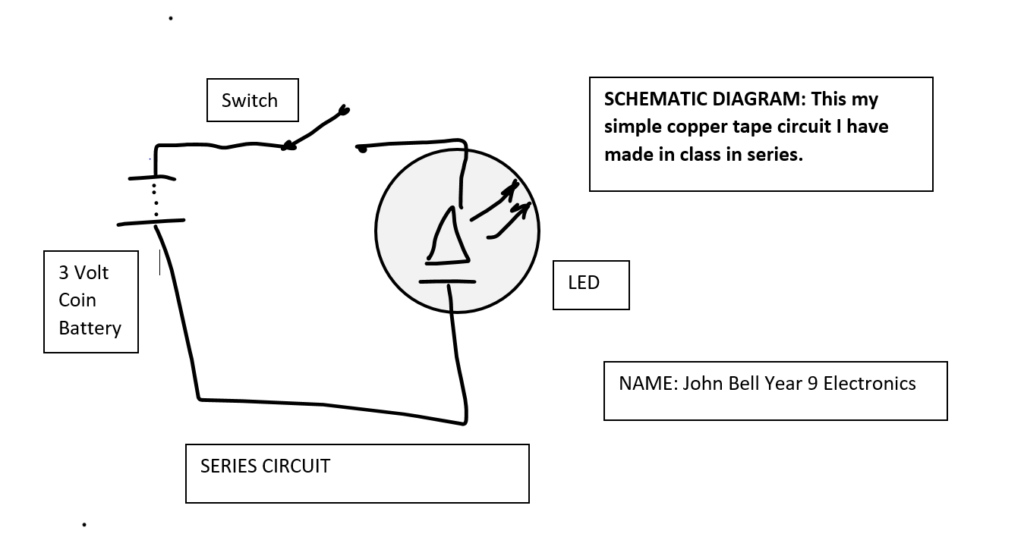

Background of the incandescent bulb and LED lights:
We all probably know the humble incandescent light. The older generation grew up with the incandescent light bulb (1920 – to 2005). An incandescent light bulb is the typical round bulb type with a filament that glows very hot – burning to the touch. Most probably, you have one in the bed lamp next to your bed, or you could have one in the centre of your ceiling in your bedroom.
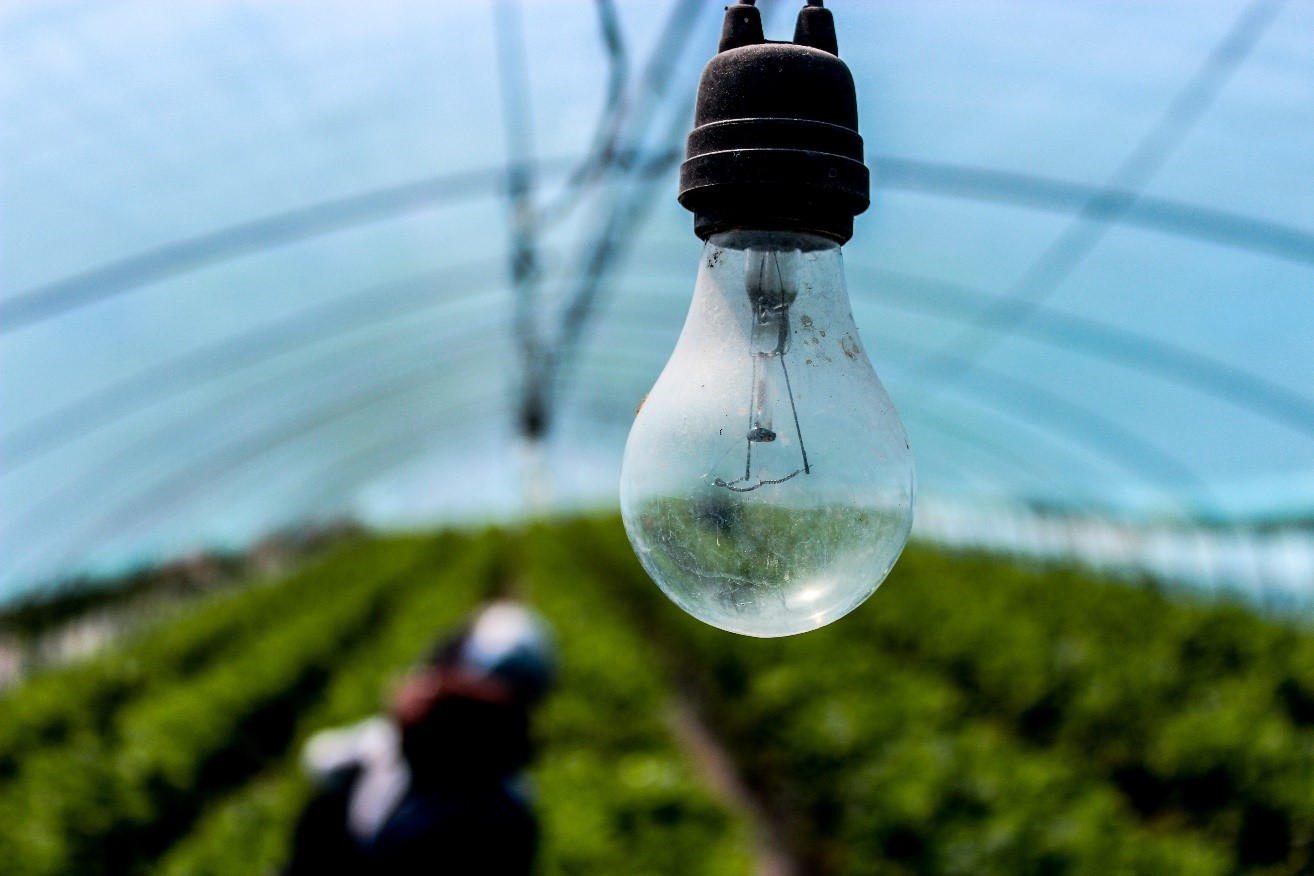
It was a health and safety hazard. Parents and caregivers used to be very careful around these bulbs with children. Touching a bulb could cause severe burns. A LED light is always cool to the touch because it only emits light and no heat. That is why it is so energy efficient! I remember shaking the old type of incandescent bulb lightly, and then I listened if the filament was loose or broken off on the inside. The clear glass bulbs were very easy to inspect. One could see if the filament was still intact. Most people still draw an incandescent bulb above a person’s head to illustrate that the person got a great idea or was enlightened by something. I wonder how we will draw an LED in sketches in future, to illustrate an enlightening moment.
I remember years ago when the CFL (compact fluorescent light) became available as new energy-efficient lighting technology. It was about 1995 – if I remember correctly. It is amazing how lighting has evolved over the past ten years; so energy efficient now.
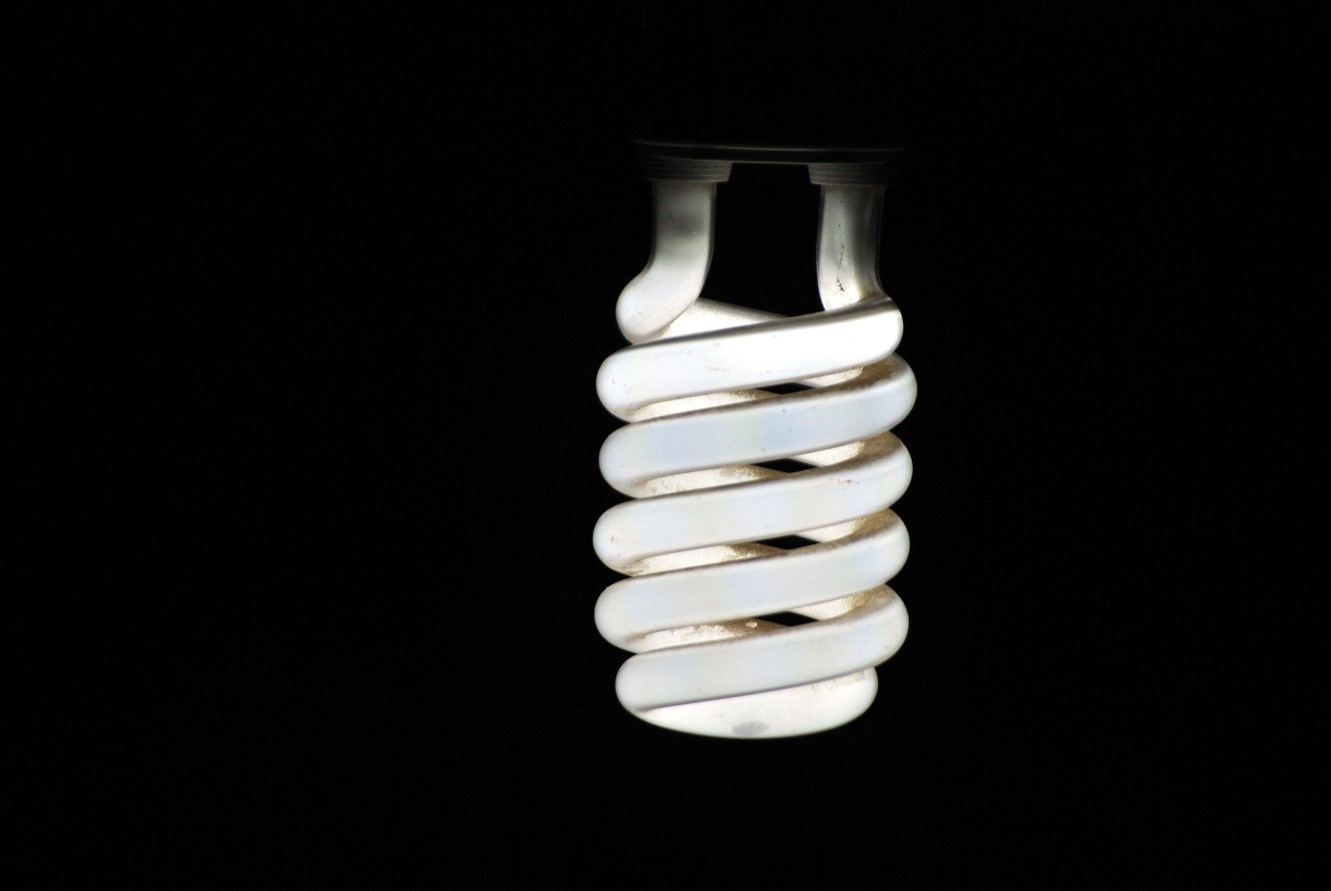
I remember changing the incandescent light bulbs, and spiral-shaped CFL’s in my own home in 2015 to LED’s – the power bill dropped significantly after the switch! I realised the enormous amount of energy a country could save if all its citizens change to LED lighting. It is these small strategies on sustainable practice that excites me. Education is the key. We can effectively take action for the environment. A great way to enthuse students to take action for the environment is by making them aware of possibilities and strategies to save our precious resources. LED’s are one such area. Students – as global citizens – can run awareness campaigns on LED lighting at school to make a difference.
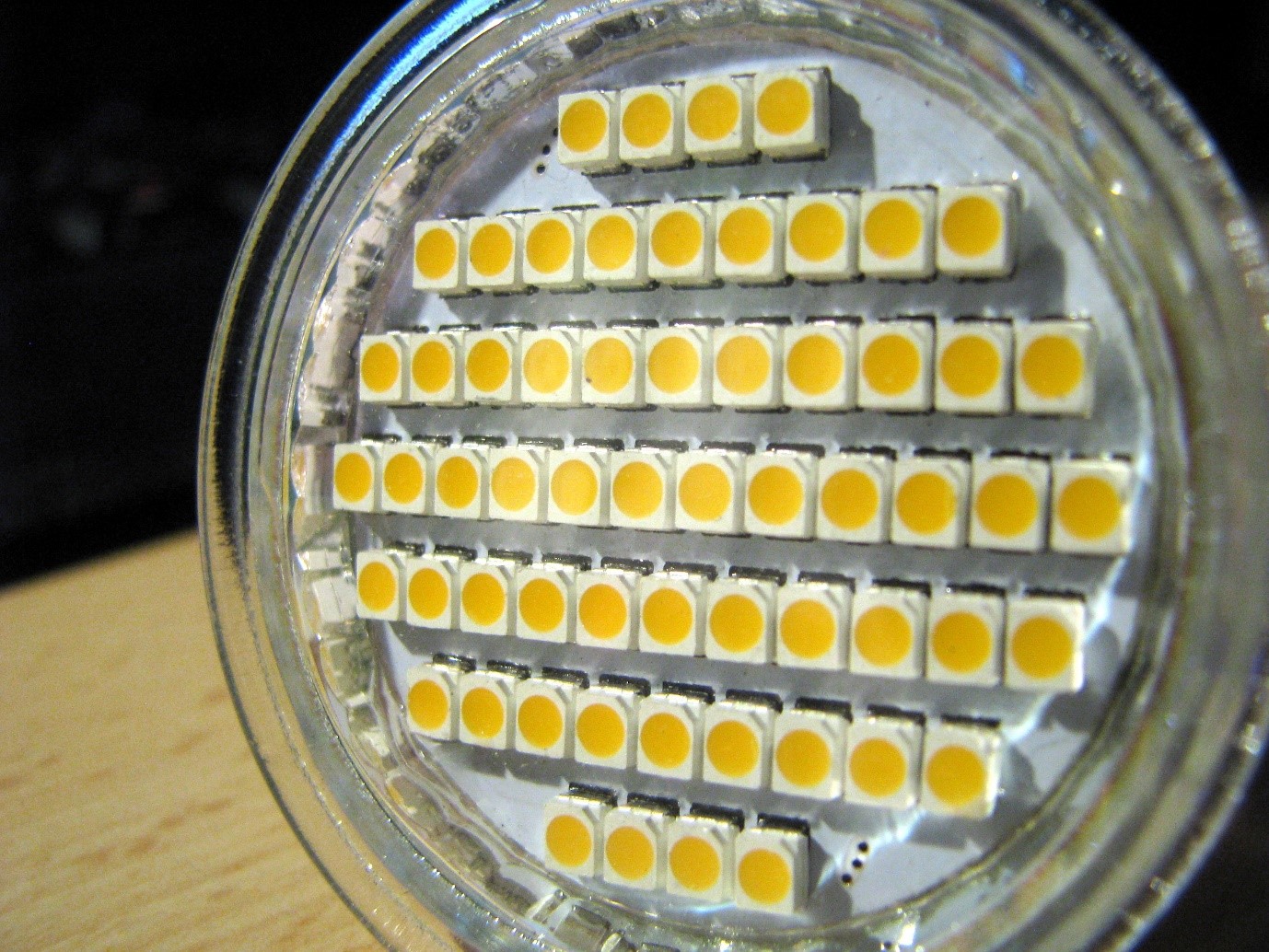
WHAT IS AN LED LIGHT?
A light-emitting diode (LED) is a two-lead semiconductor light source. A p–n junction diode emits light when activated. When a suitable voltage is applied to the leads, electrons can recombine with electron holes within the device, releasing energy in the form of photons. In simple terms, a ‘chip glows.’ No heat is emitted – cool to the touch.
ENERGY EFFICIENCY OF LED’S
The electricity used over the lifetime of a single incandescent bulb costs 5 to 10 times the original purchase price of the bulb itself. Light Emitting Diode (LED) and Compact Fluorescent Lights (CFL) bulbs have revolutionised energy-efficient lighting. CFLs are simply miniature versions of full-sized fluorescents.
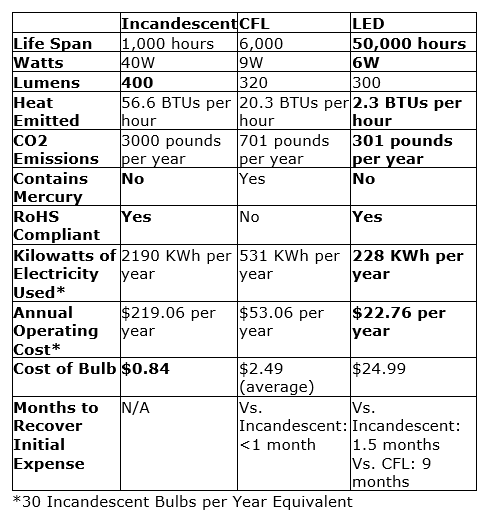
TABLE COMPARING INCANDESCENT, CFL’S AND LED LIGHTING (‘BULBS’): Comparing a candescent light, compact fluorescent light (CFL), and an LED light. Credit: https://www.elementalled.com/understanding-the-different-types-of-light-bulbs/
WHAT IS A DYNAMO?
A dynamo is a machine for converting mechanical energy into electrical energy, typically using rotating coils of copper wire in a magnetic field.
TEACHER SHARING HIS MEMORY OF A DYNAMO: I can remember my first encounter with a dynamo many years ago. I was a young primary school student when I saw an African man used a dynamo on his bicycle. The dynamo was installed on the frame of his bicycle, and the wheel touched the tyre. The power generated by the dynamo light up the headlamp, which was installed in front of the handlebars.
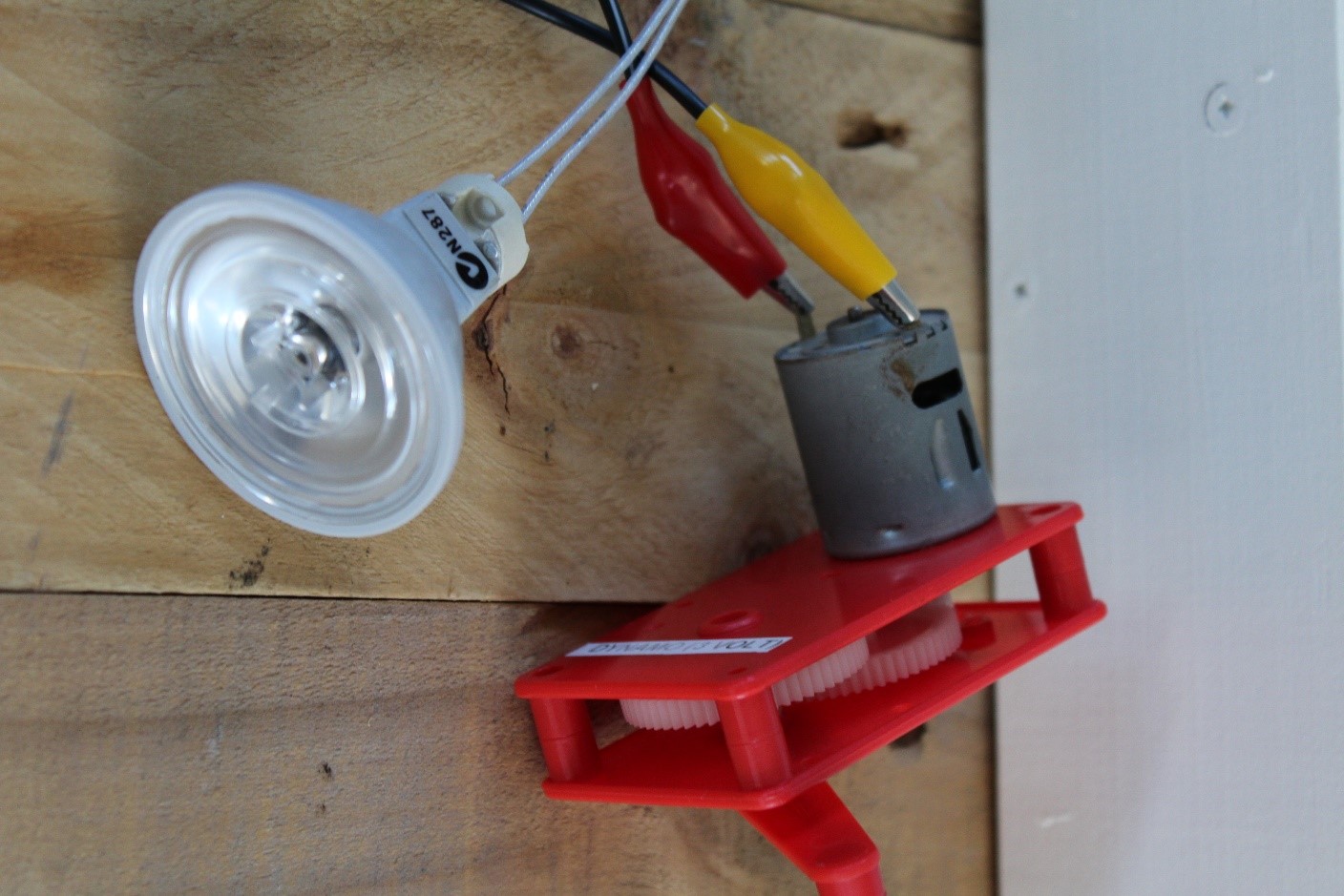
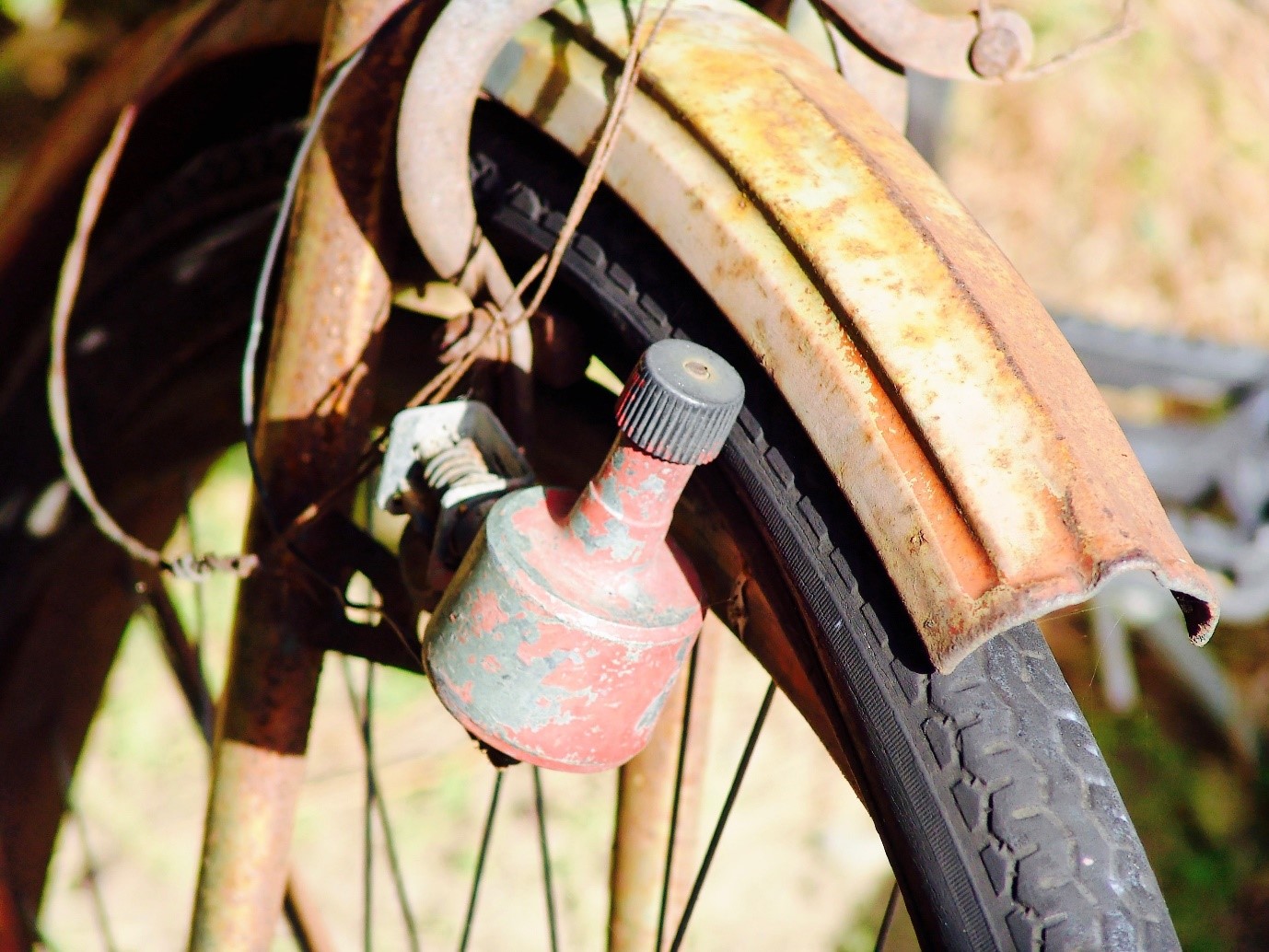
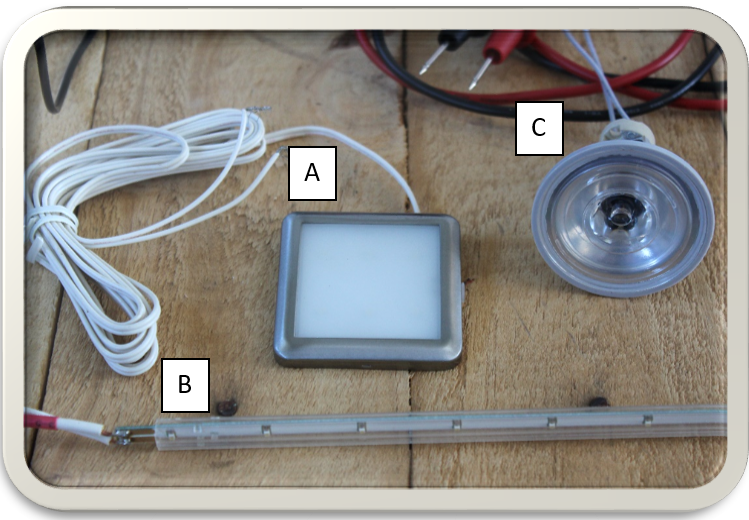
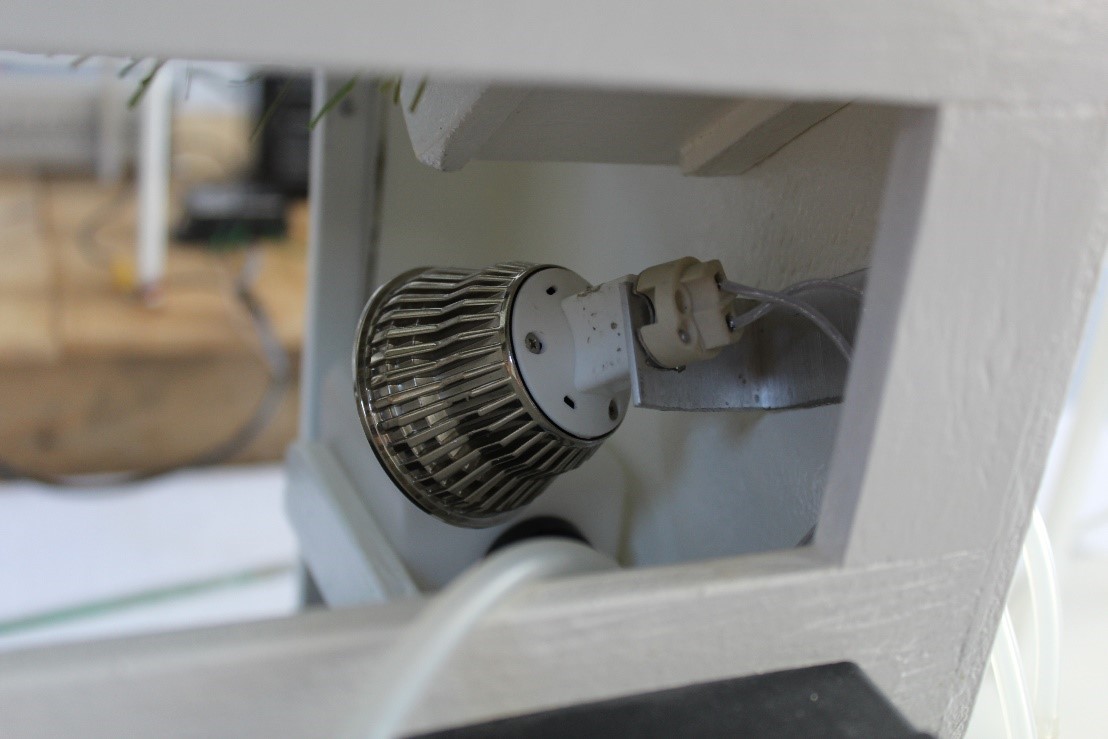
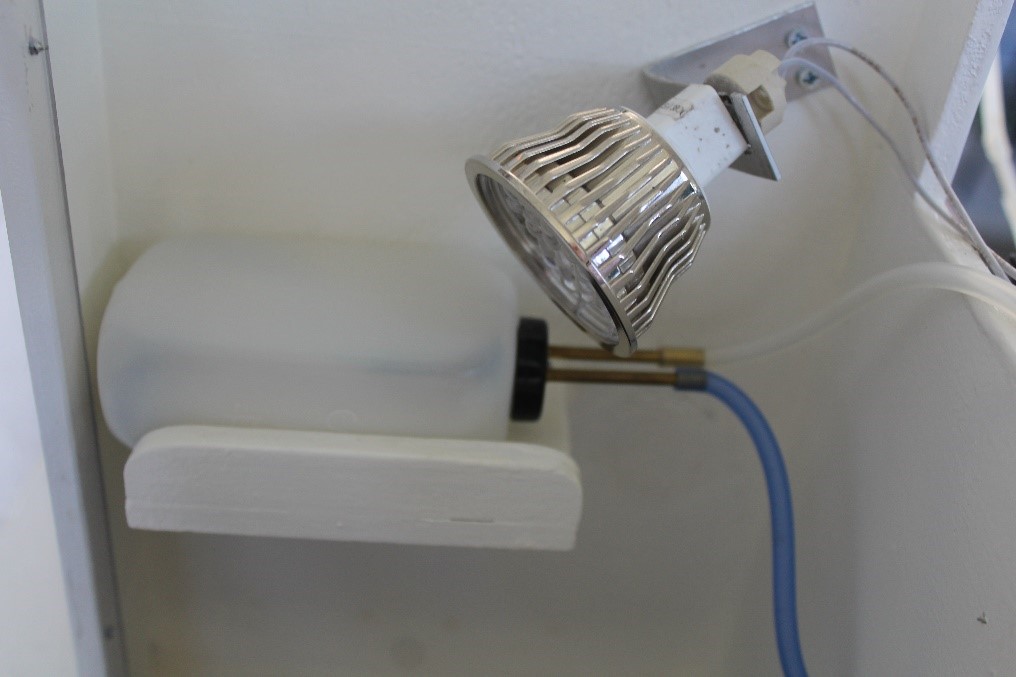
Teacher’s experience with teaching students about LED’s:
LED lighting is an excellent method to introduce students to electronics. The introduction to LED’s is very simple and straightforward and can be taught to primary school students. As most teachers are aware, kit sets are available for Technology Projects. Doing a simple electronics project including lighting and sound will entertain students. Project-based learning and student-led learning is an exciting avenue to explore.
With the continuous development of new products and the invention of new ideas, there are just so much to choose from. ‘Poetry on Paper,’ is a relatively new development where copper wires, plates and strips are combined with lighting, sound components and more to produce art. This idea allows students to express their individuality and allow the students to be creative and innovative. For an extension into literacy, the ‘artboards’ could tell a story. It means students could write an innovative, creative story using a range of electronic artboards – almost like a children’s illustrated storybook. The sticky copper tape is used to create circuitry effortlessly. No need for soldering is required. However, simple soldering is an additional skill – proving lots of fun – that could be included. Very cost-effective project-based teaching strategy!
See the website of Exploratorium for excellent ideas! Make simple or complex electrical circuits on a flat piece of paper! Using copper tape and surface-mount LEDs allows you to make a fully functional circuit on a flat surface, like a piece of paper. You can make light-up greeting cards, make origami animals come to life, or create three-dimensional pop-up paper sculptures that have working lights in them. Great to teach sustainability, sustainable architecture, and more.
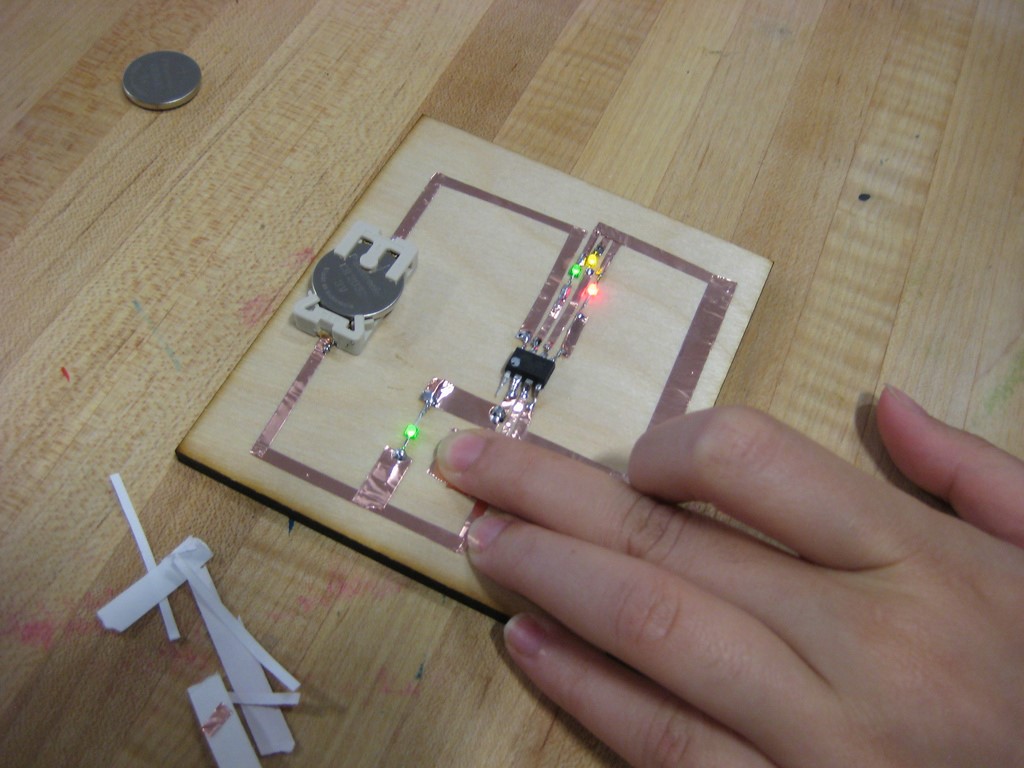
Link to ideas for Copper Tape projects: EXPLORATORIUM
https://tinkering.exploratorium.edu/paper-circuits
List of Ideas for LED lights and sound (basic electronics) projects:
1. Greeting cards – cardboard and origami combined with LEDs and sounds components.
2. Origami with lights and sounds
3. Sculptures of anything-imaginable (e.g. tiny house, Christmas tree. Etc.) – add LED lights, switching and flashing lights, sound, for more fun.
Powered sketchbook: Video
See the idea of adding copper tape, batteries, and LED’S to a sketchbook. Look at the interesting design and artwork! LED lights included highlighting shape and form.
1. Powered Sketchbook (YouTube):
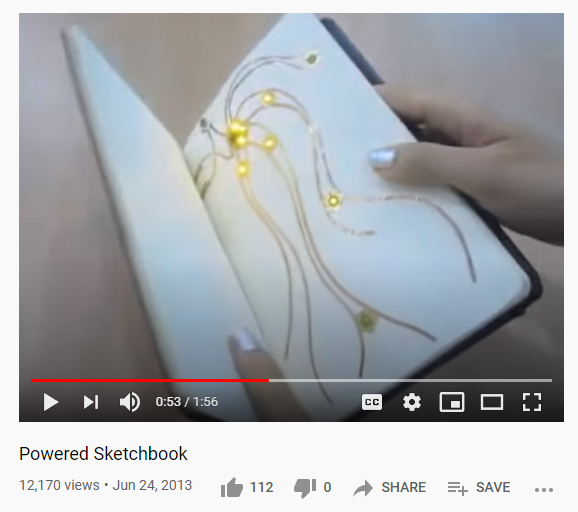
You can search for Jie Qi on YouTube to see the amazing creative ideas of Jie!
2. Sketchbook Sample: Circuits and origami:
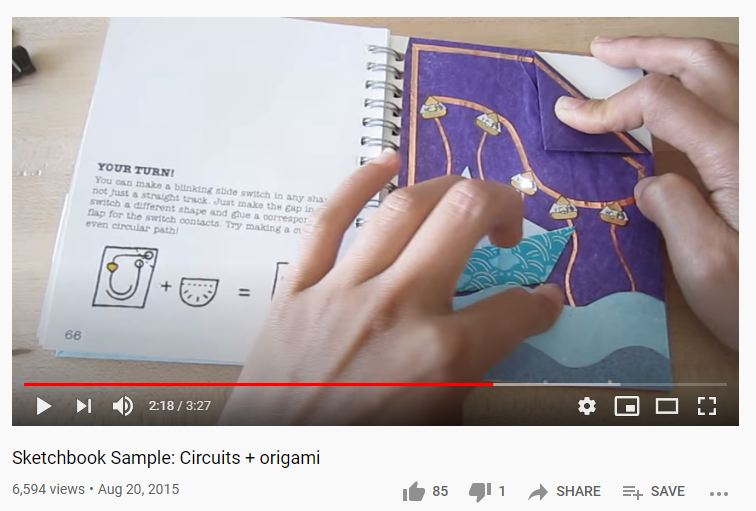
INTEGRATED LEARNING
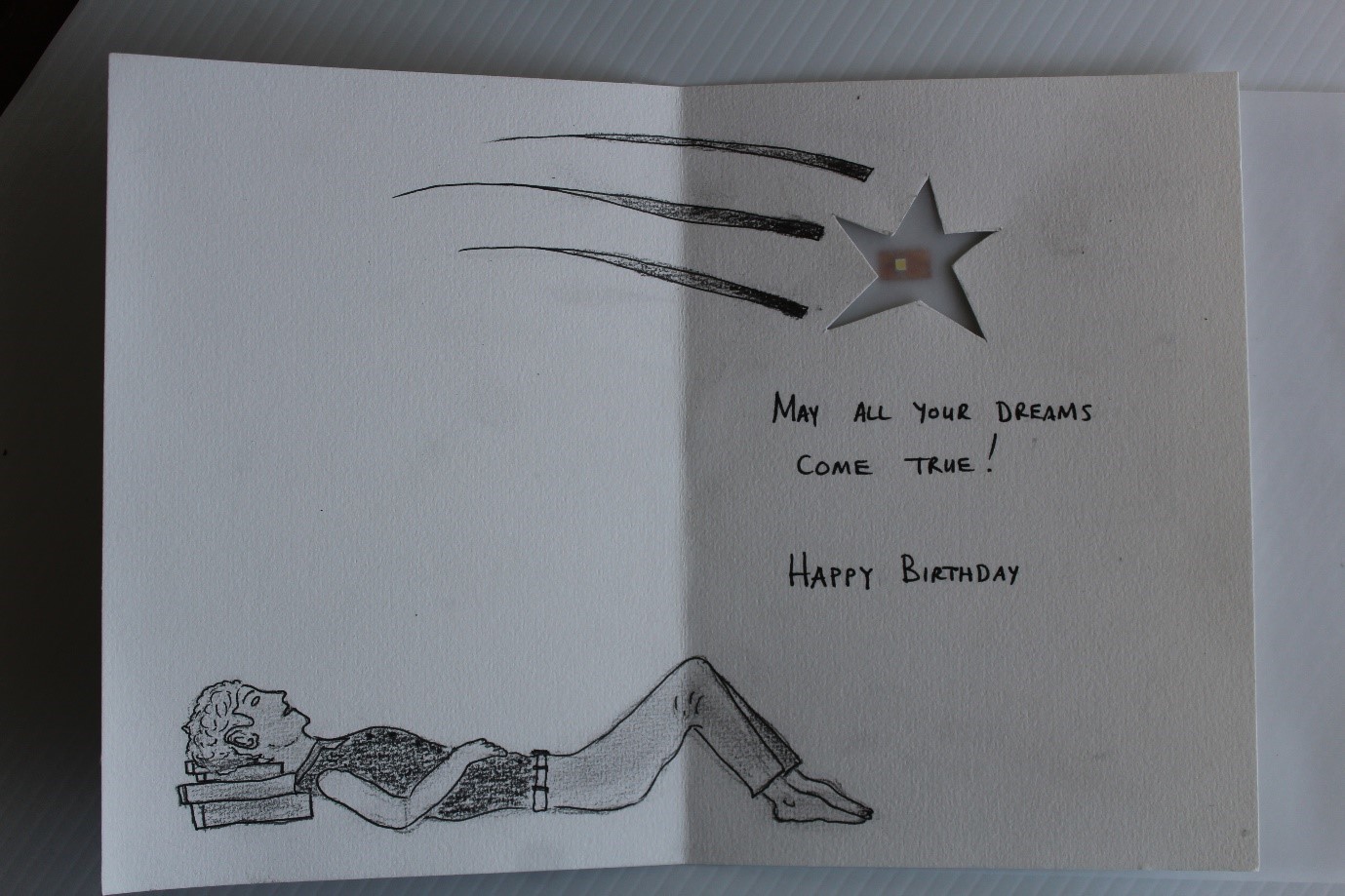
Students love having fun with circuits, LED lights, switches, buzzers and microcontrollers.
Once students have mastered the basics, there is just so much more to explore. In this project, I will discuss a simple GREETING CARD project. The project can be described as a simple paper card with artwork in front and ‘hidden’ circuitry at the back of the card. The component, in brief, is sticky copper tape, 3 Volt battery, simple switch, LED light, and a microcontroller (optional) that allows the LED light to flash for example. Just the basics are described here. Teachers and students can develop the idea and refine it.
The greeting card is a great project for INTEGRATED LEARNING! The Maths, Science, Technology, Fine Arts, Design and Visual Communication, Accounting, Digital Technology, Business & Entrepreneurial Studies, and English teacher could all work together on this project.
Activities could include (suggestions):
· SCIENCE: Exploring simple electrical diagrams
· MATHS: Exploring calculations (formulas) for Electricity (Volts and Ampere).
· ACCOUNTING: Calculate the cost make the card
· BUSINESS & ENTREPRENEURIAL STUDIES: Calculate possible and projected profits if sold to the public
· DESIGN AND VISUAL COMMUNICATION: Planning, sketching, diagrams, and more.
· FINE ARTS: Design and create an interesting greeting card (e.g. Happy Birthday). Explore different media (watercolours, colouring pencils, pro-markers, pastels, etc.)
· ENGLISH: Consider words and information on back (e.g. Publishing Company, barcode, etc.)
· DIGITAL TECHNOLOGY: Produce the results (photos, diagrams, etc.). Upload student work to school portals or internet – showcase student work.
· ELECTRONICS: Programming Picaxe microcontrollers. Understanding simple electronic circuits and their functioning.
· Can you think of any more subject areas that could be covered?
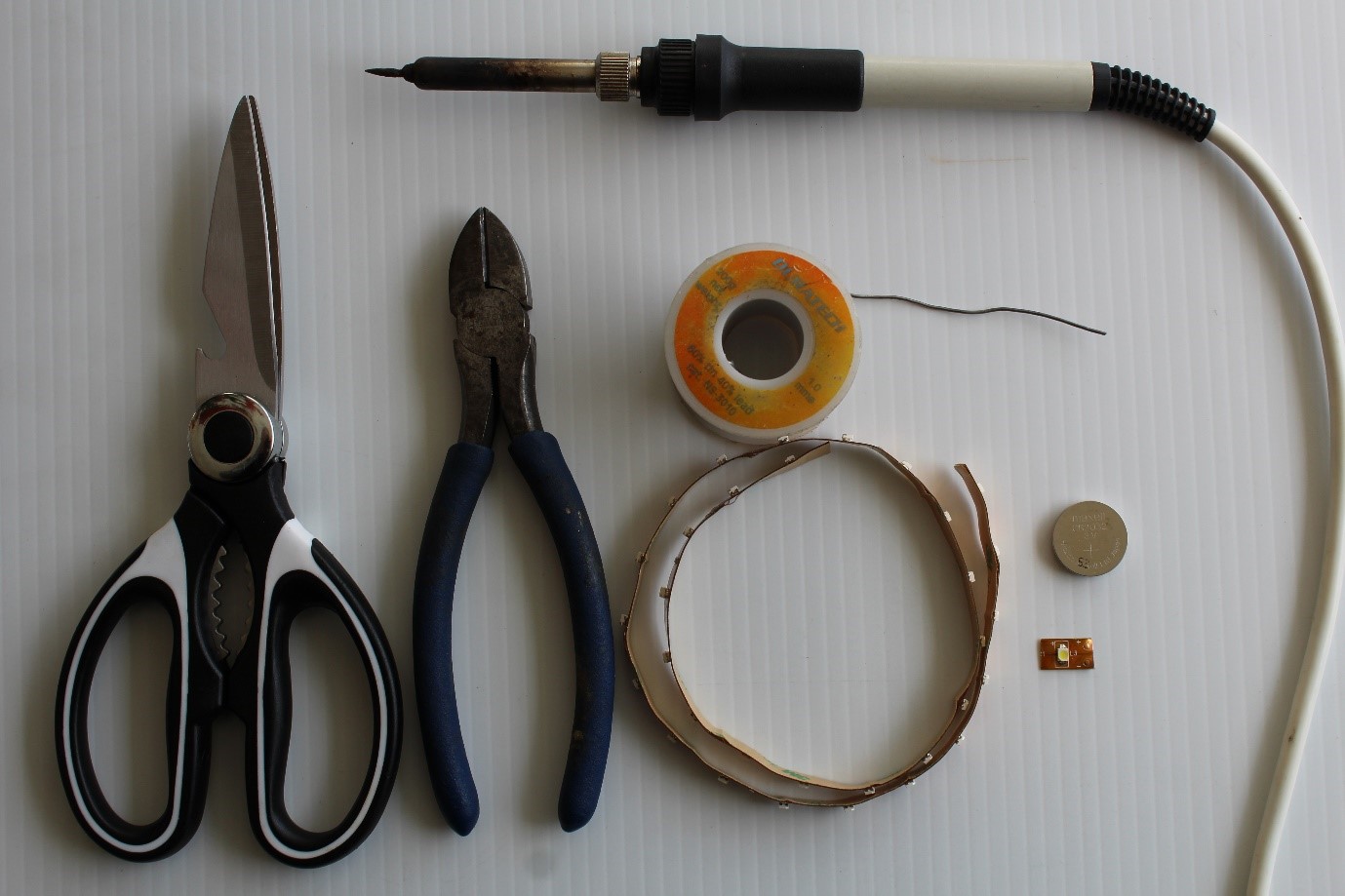
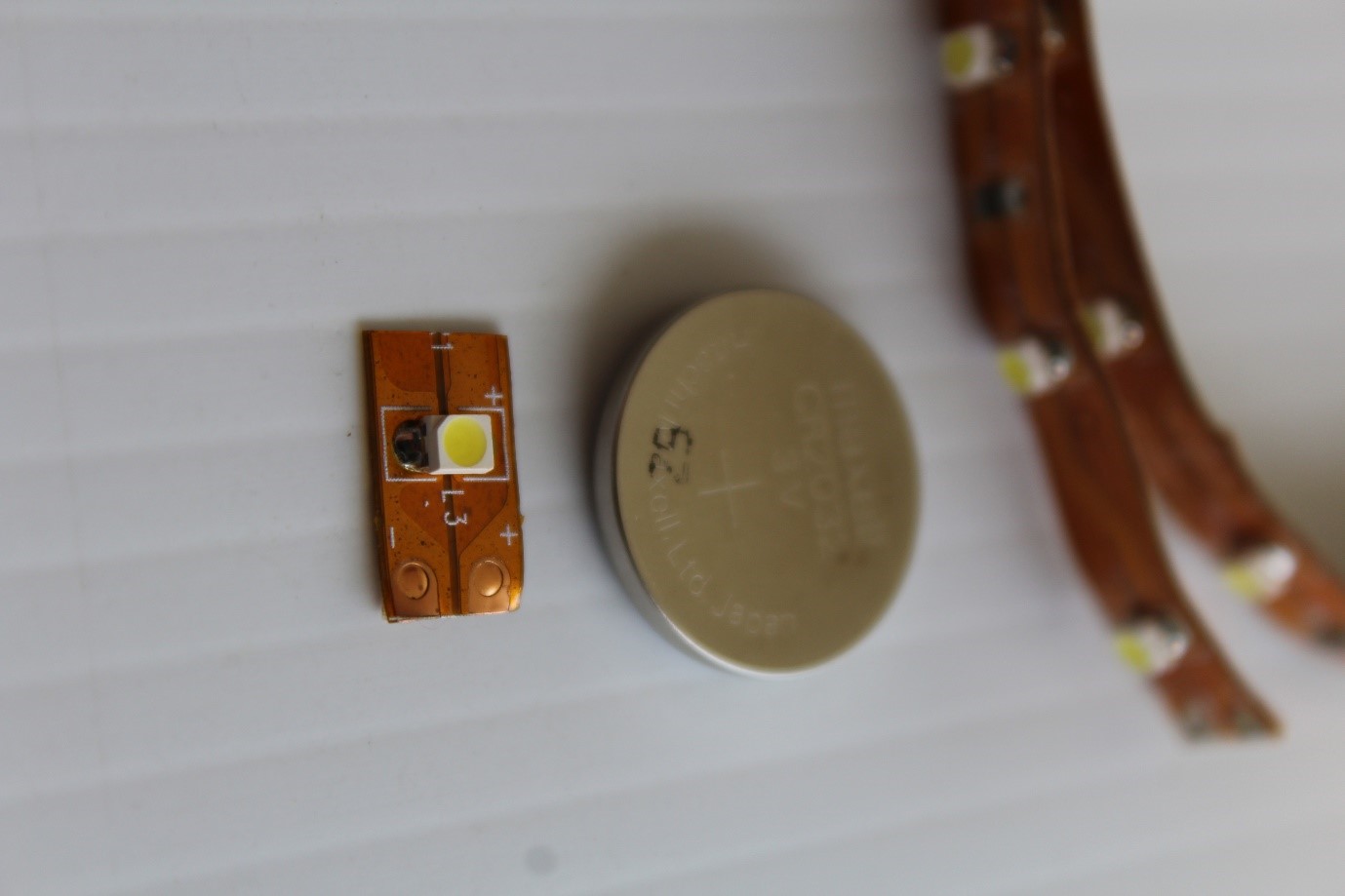
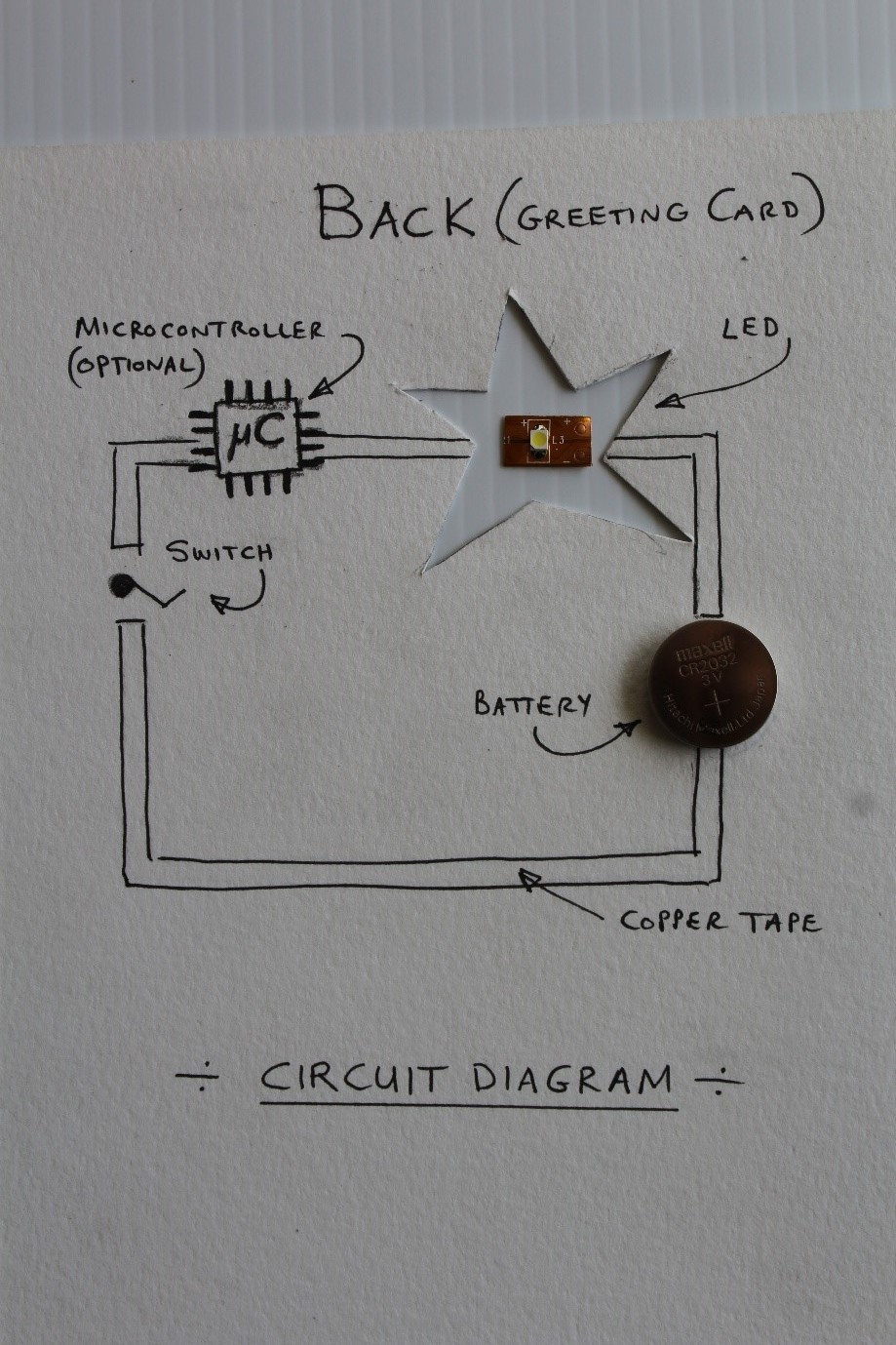
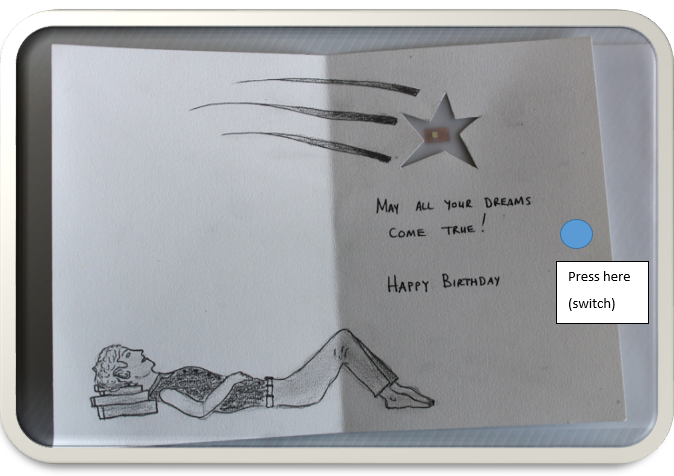

How to create the greetings card:
· Research LED greeting cards. Many ideas are available on YouTube. Make notes and sketches with annotations of your ideas.
RESEARCH: Videos (YouTube)
‘Cupcake Paper Circuit Card with LED Light’
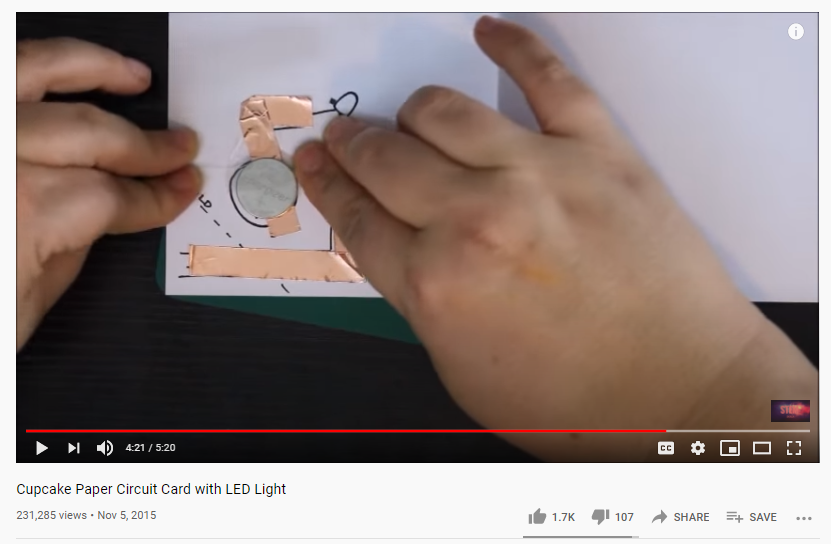
Description of the project: ‘Project-Based STEM.’
WHAT IS ‘STEM’ (Science, Technology, Engineering and Mathematics)
STEM is a curriculum based on the idea of educating students in four specific disciplines — science, technology, engineering and mathematics — in an interdisciplinary and applied approach. Rather than teach the four disciplines as separate and discrete subjects, STEM integrates them into a cohesive learning paradigm based on real-world applications.
In simple terms, we are going to take a project approach in this lesson and apply Science. Technology, Engineering & Maths to learn about electricity, LED lights, batteries, making greeting cards, and more.
Explore the world of elementary science while learning how to make a light-up paper circuit card with a LED light. Practice your skills with a basic electrical circuit using conductive copper tape and a 3v battery. Use the link below to see a step-by-step illustration on how to create these LED cards.
https://www.instructables.com/Light-Up-Card/
Sparkfun:
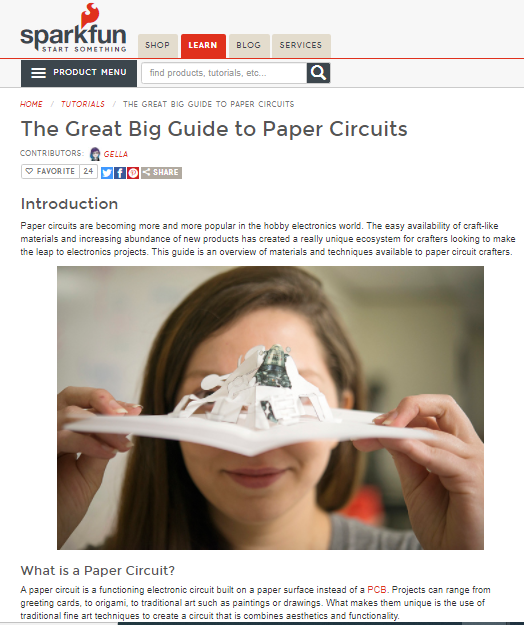
· Plan the ideas and concepts by making sketches and diagrams (electrical) on the card in pencil. Cardboard colour of your choice. You will be able to erase all your markings and sketches if done in pencil on the card! Don’t press too hard on the pencil when drawing and making annotations on the card!
· Investigate a design era. In other words, you will choose a theme, which interests you. For example ‘Pop Art’
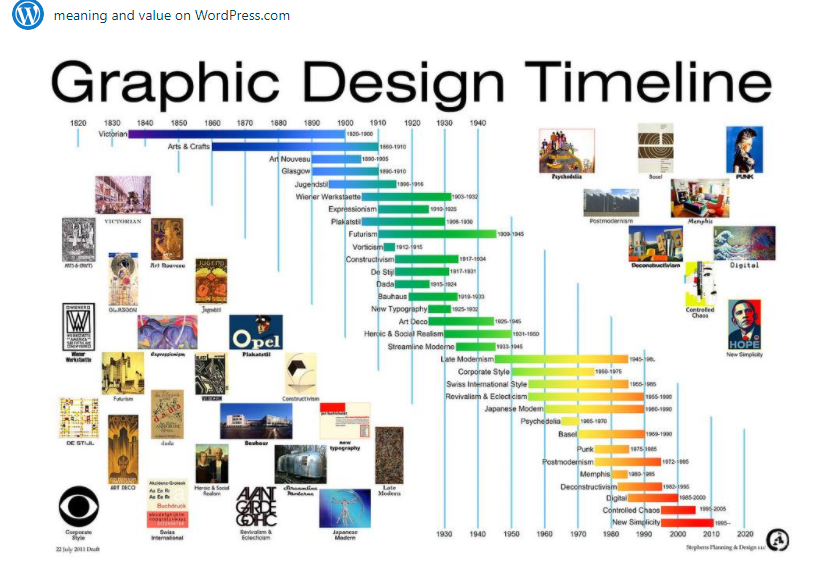
Source: https://meaningandvalue.files.wordpress.com/2014/10/10534100_10153024480378268_4624978595887476923_o-2.jpg Visit website (WordPress blog): https://meaningandvalue.wordpress.com/tag/timeline/
· Consider artwork – complete artwork on the inside of the card. Choose a theme. For example ‘Pop Art”.
Modern-day Pop Art beauty: By Sandra Chevrier
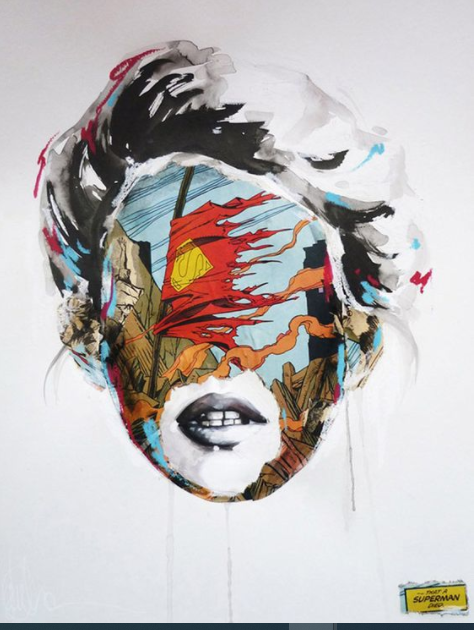
Source image:
https://i.pinimg.com/564x/b6/ca/48/b6ca48329bab3bf3eaa6ccd91ca9a781.jpg
· Remember to consult the teachers from different subject areas.
· Consider how you will present your work. For example, taking photos of the different stages, or creating a video clip. Save the images and videos to your computer. Once completed you can consider the medium or software you are going to use to illustrate and display your work.
· Lay the copper tape on the cardboard by removing the backing. Place the battery in position. Solder the switch and microcontroller (‘flashing function’), and an electrical switch in position. OPTIONAL: Sound (buzzer or music) components.
· Develop a ‘backing’ (cover) for the electrical circuit. The cover is to hide the working components. Use cardboard to cover the parts (e.g. flat cardboard boxing) – paste it to the back once everything is working properly. Test the working of the card. See the accompanying image for details.
· The card is now complete. Consider an ‘envelope’ for the card. The best option is to take a sheet of cardboard and make a flat ‘box’ for the greetings card. You could add the artwork to the front or back.
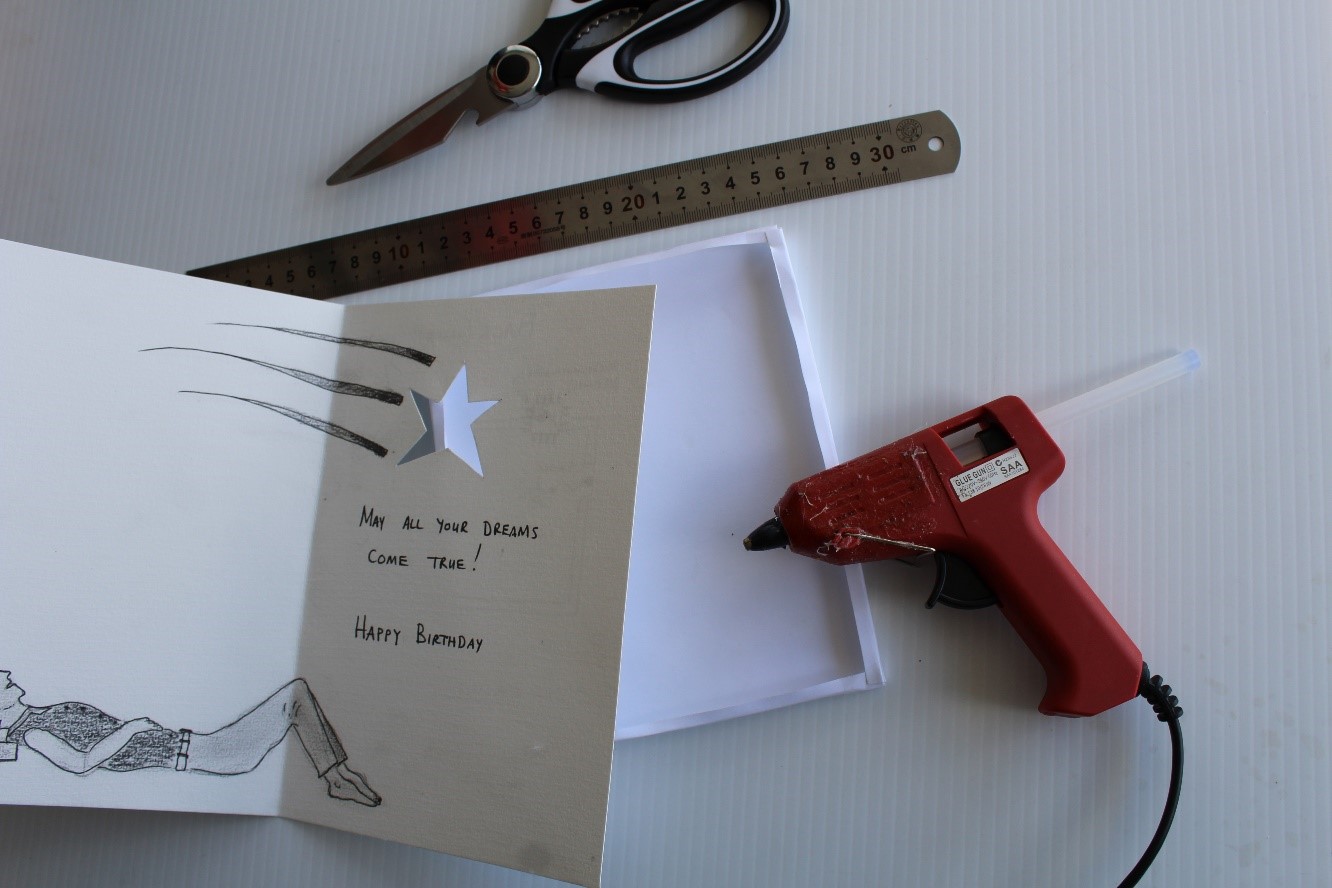
OPTIONAL: PICAXE
Depending on the age of students and/or their skill level sound could be included (buzzer/music, etc.). Consult the Electronic shop on what components are available. For experts in electronics there are so much more possibilities, like different programming components (See Picaxe). It means the student van programme a microcontroller (black chip-square shaped) by plugging in an usb cable from the microcontroller to the computer. Free software for Picaxe is available for download. For example, the student could include 3 LED lights and program the microcontroller to flash the light for 1 second and pause for 2 seconds in between flashing.
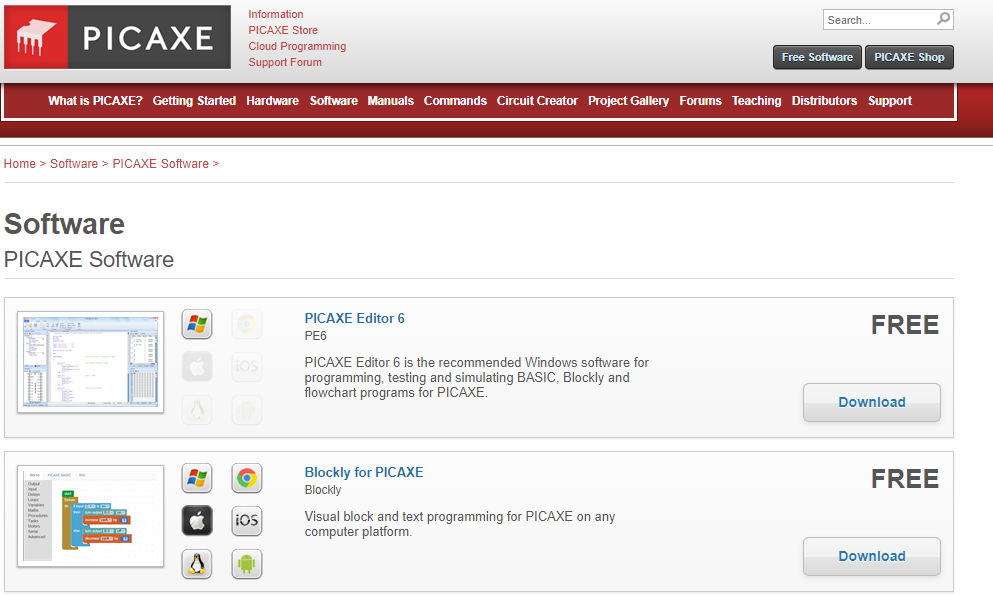
Free download Picaxe software. Source: http://www.picaxe.com/Software/PICAXE/
WHAT IS A PICAXE?
A PICAXE microcontroller is a Microchip PIC microcontroller that has been pre-programmed with the PICAXE bootstrap code. The bootstrap code enables the microcontroller to be reprogrammed without the need for an (expensive) conventional programmer, making the whole download system a very low-cost simple serial cable! In other words, the student can use a desktop computer and USB-cable connected to the microcontroller (Picaxe) to program the controller (to perform different functions).
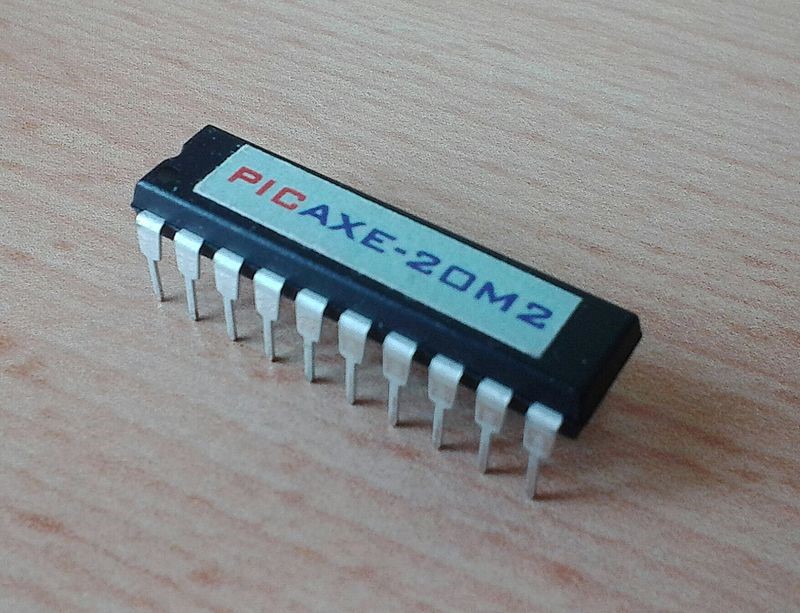
HOW TO PROGRAM A MICROCONTROLLER USING PICAXE USB CABLE AND FREE SOFTWARE (BLOCKLY APP):
HOW TO PROGRAM A MICROCONTROLLER USING PICAXE USB CABLE AND FREE SOFTWARE (BLOCKLY APP):
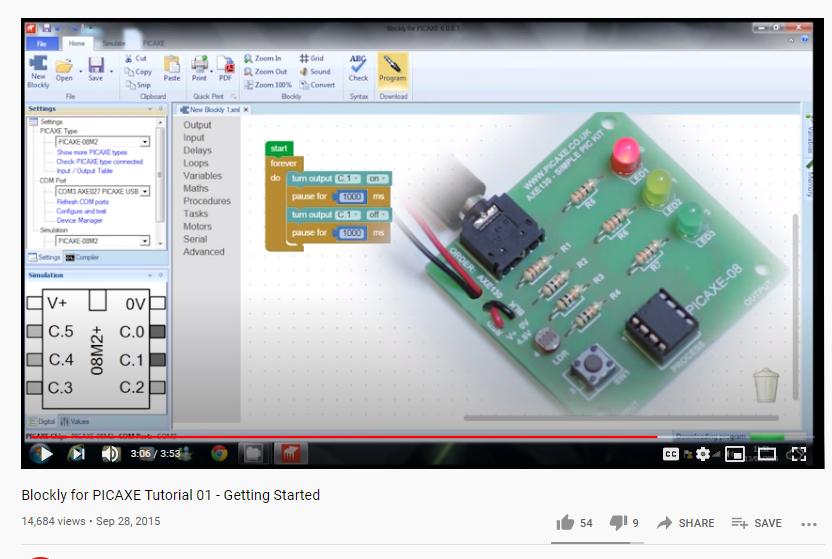
You could download the ebook on STEM, STEAM AND ESSSTEAM by the author here:
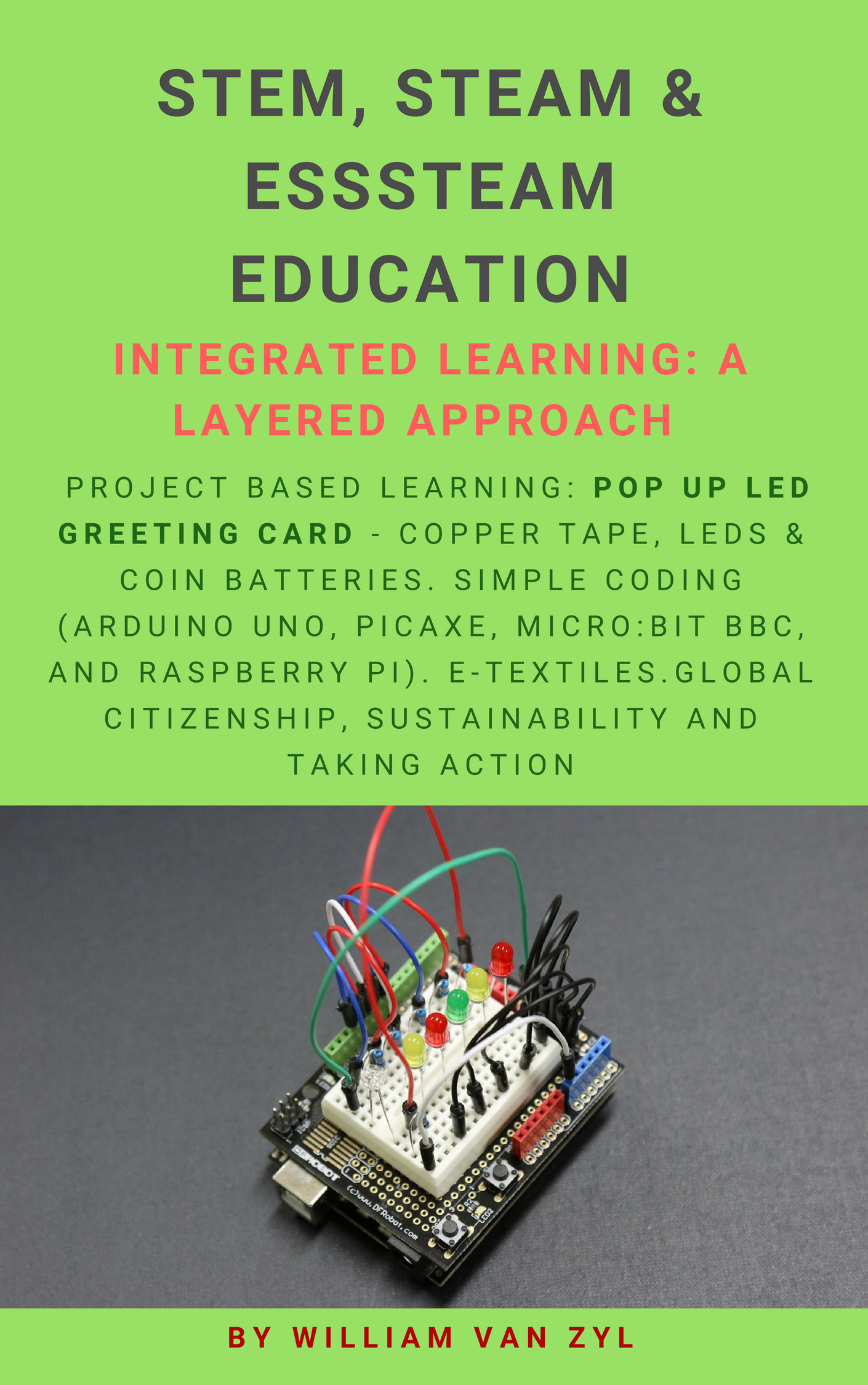
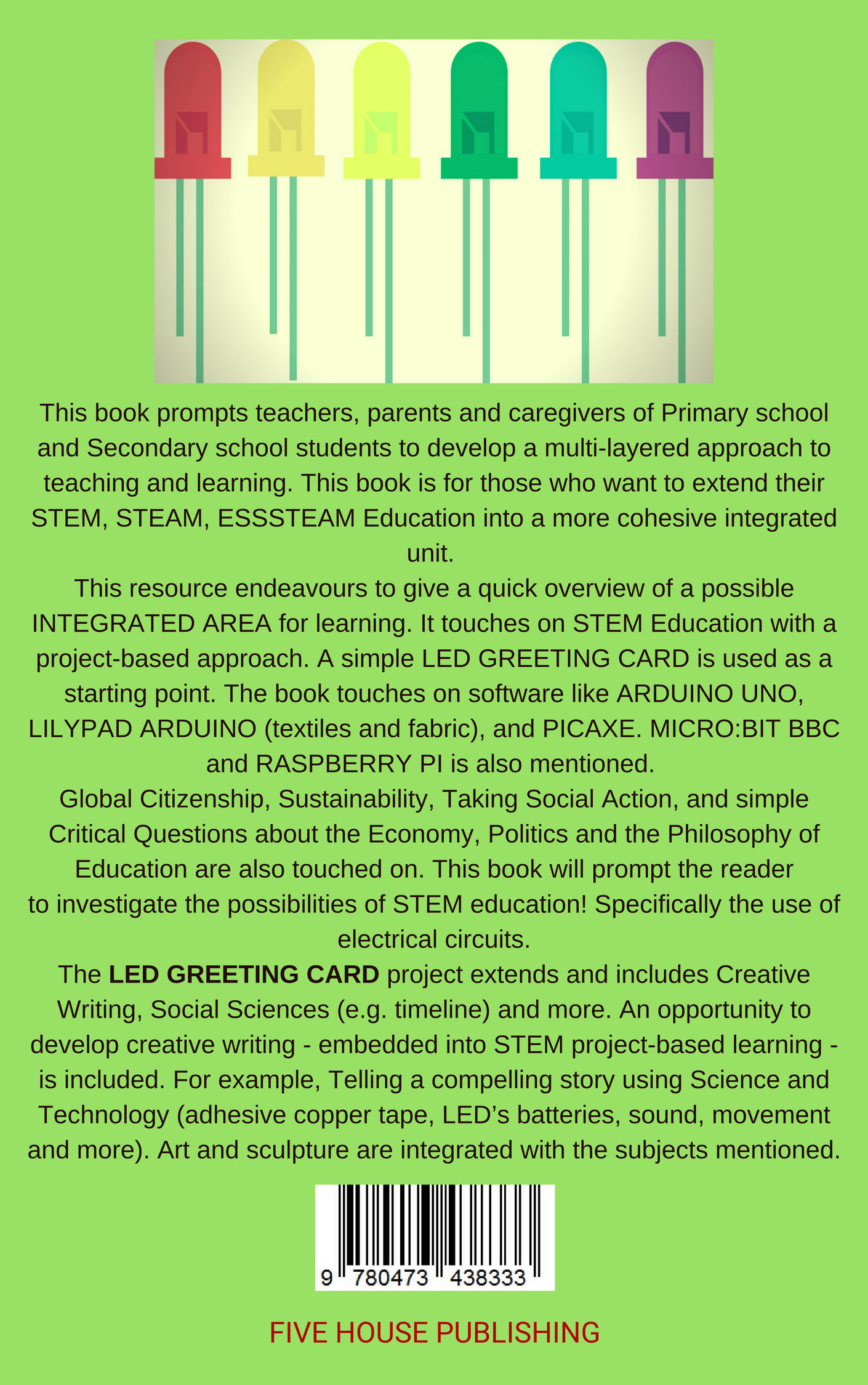
Available at Five House Publishing:
CREATE MOVEMENT (VIBRATING) FOR A GREETINGS CARD ‘WASHING MACHINE.’
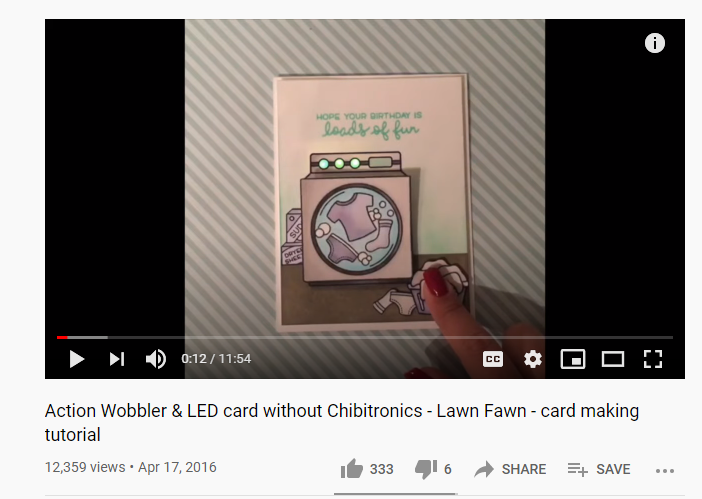
See how a ‘copper pen’ (metal-based ink pen) is used to replace the copper strips). Just use the pen to draw the circuit. It takes a minute to draw a full circuit!
The greetings card contains typical LED’s a 3 Volt battery and an exciting ‘wobbler’ that wobbles the drum of the ‘washing machine greetings card’.
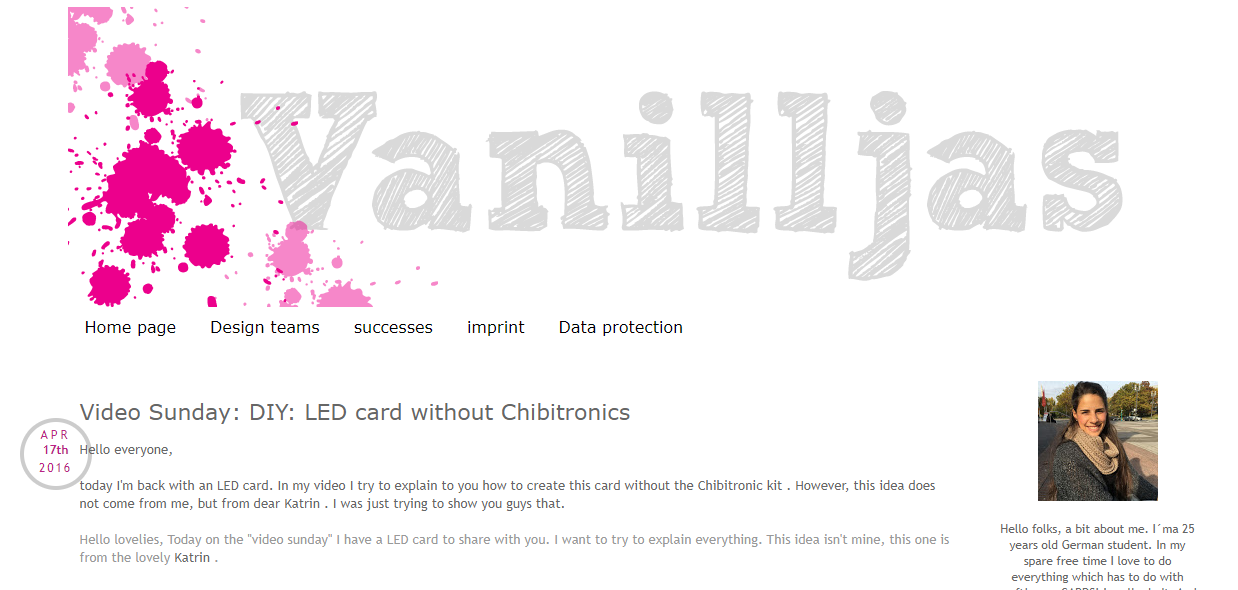
CHIBITRONICS:
Chibitronics is the company that developed (and supplies) Circuit Stickers. The stickers and accessories are easy-to-use peel-and-stick electronic modules. Use them with copper tape to add electronics to any sticker-friendly surface (paper, fabric, plastic) without soldering! Just peel and stick- easy! It includes light sensors, microprocessors, and more. For the advanced learner, a programmable microcontroller is available. See the video on the Chibitronics website. Great for student activities and will excite educators. So much fun! So many possibilities!
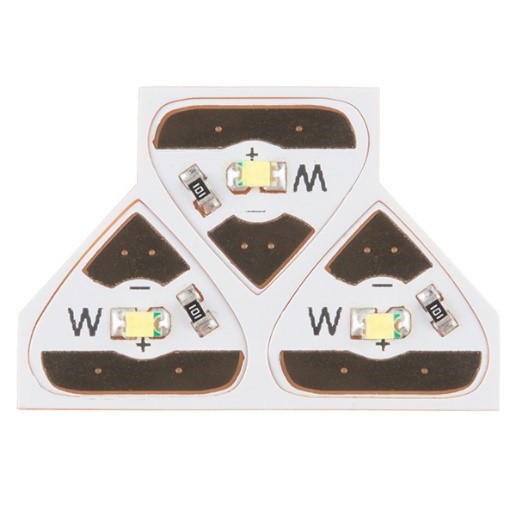
Link to products: www.sparkfun.com/products/13290
Link to Vimeo video on Chibitronics
Programme a card (advanced)
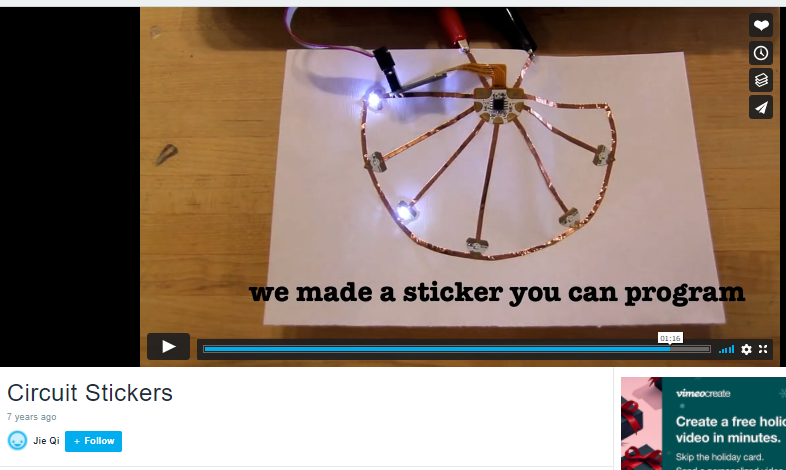
SOLDERING ON THE COPPER TAPE:
A next step is to teach students the basics of soldering circuits. Student love soldering. It is worth investing. Circuits are more reliable and more permanent. A great skill for doing electronics later as a follow on.

LAWN FAWN:
Lawn Fawn is a small company from Southern California that specialises in crafting products (clear stamps, dies, paper & more) that are fun and lively. Our products feature original designs that range from versatile basics (we love alphabets and polka dots) to fun and quirky (yay for yetis!) and everything in between.
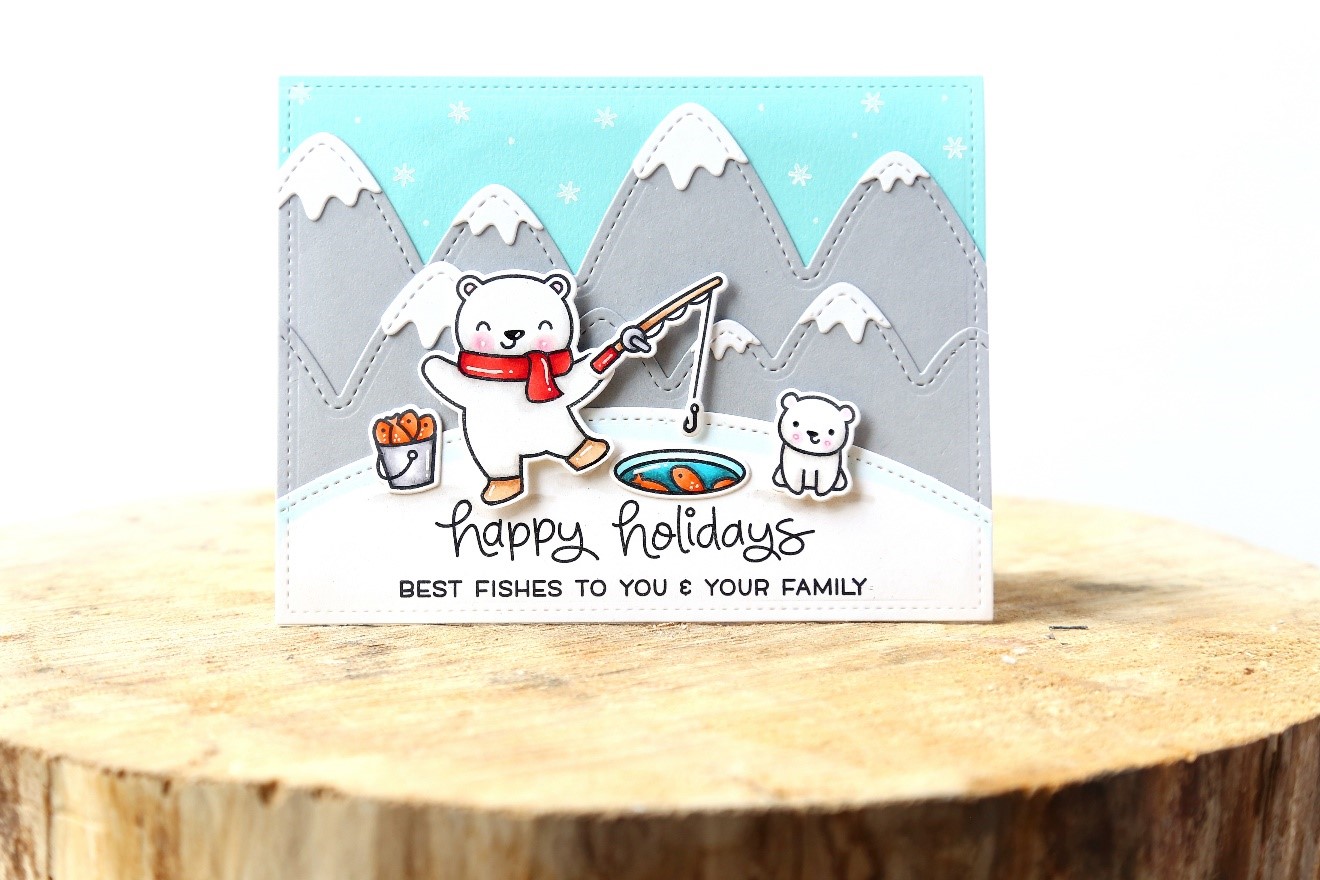
Blogged here: justmeprints.blogspot.ca/2017/07/lawn-fawn-sneak-peek-wee…
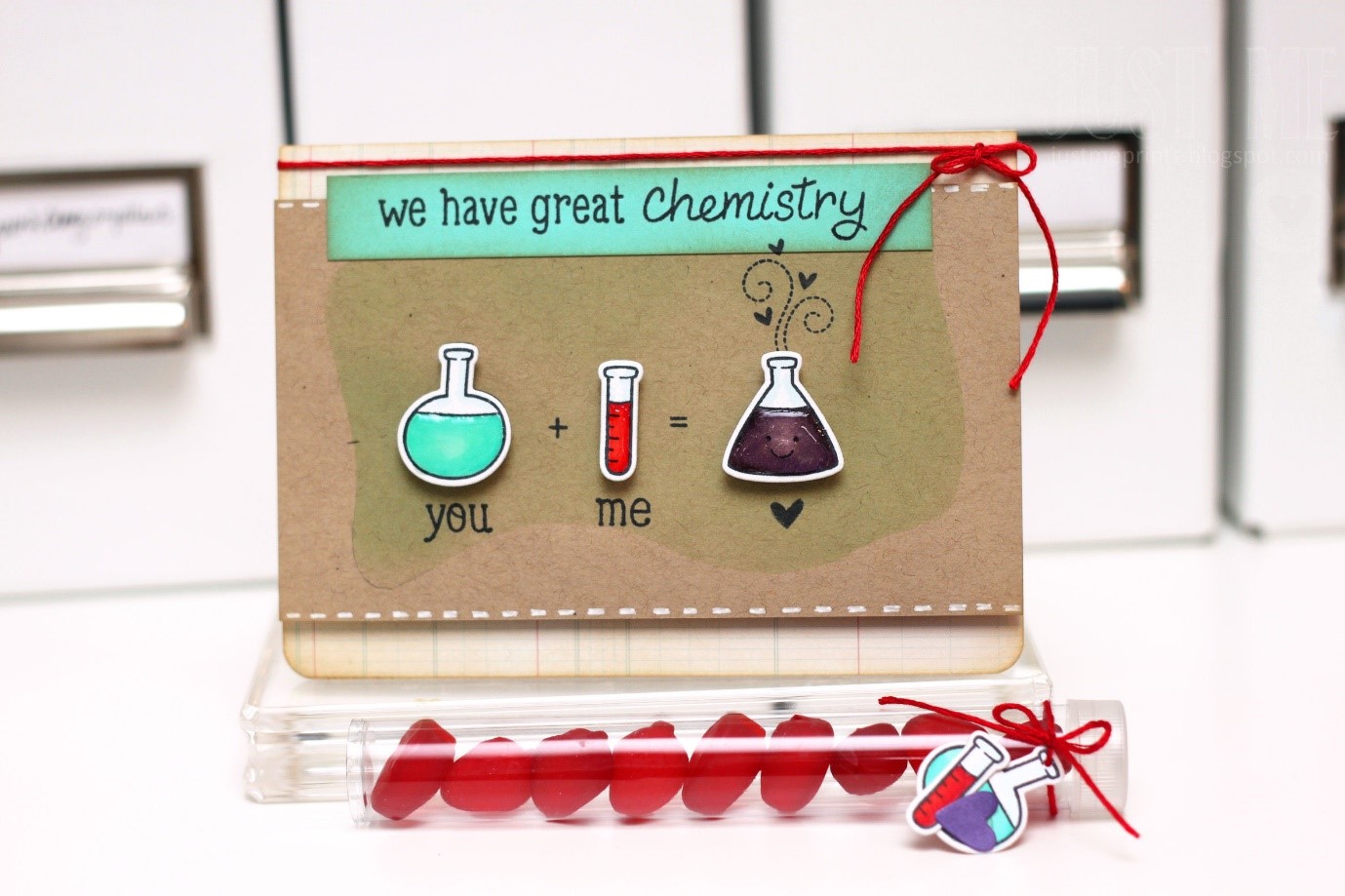
Blogged here: justmeprints.blogspot.ca/2013/12/science-of-love-lawn-faw…
ALTERNATIVE TO COPPER TAPE: A ‘COPPER PEN’ (BRAND – CIRCUIT SCRIBE)
Link to YouTube:
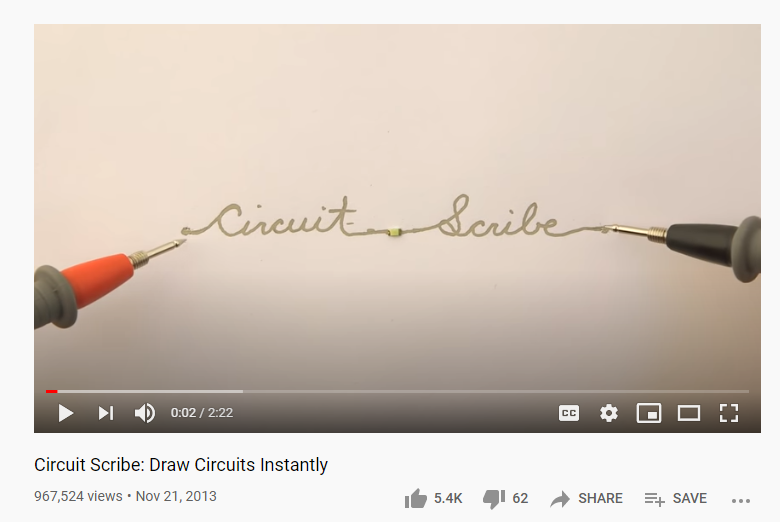
Link to Vimeo: Circuit Stickers + Circuit Scribe
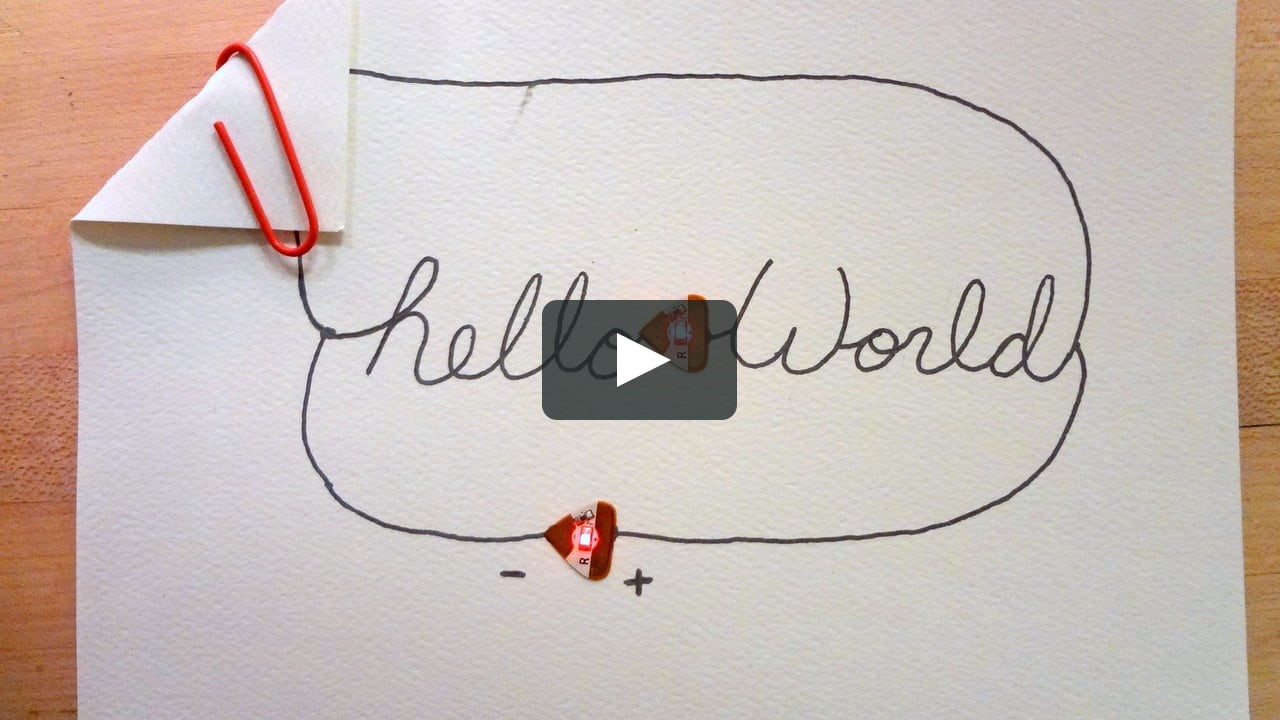
DESCRIPTION: Sketching electronics with LED Circuit Stickers and a Circuit Scribe conductive ink pen. I create a “Hello World” postcard and a twinkling sailboat greeting card.
Templates for these projects – CHIBITRONICS: https://chibitronics.com/
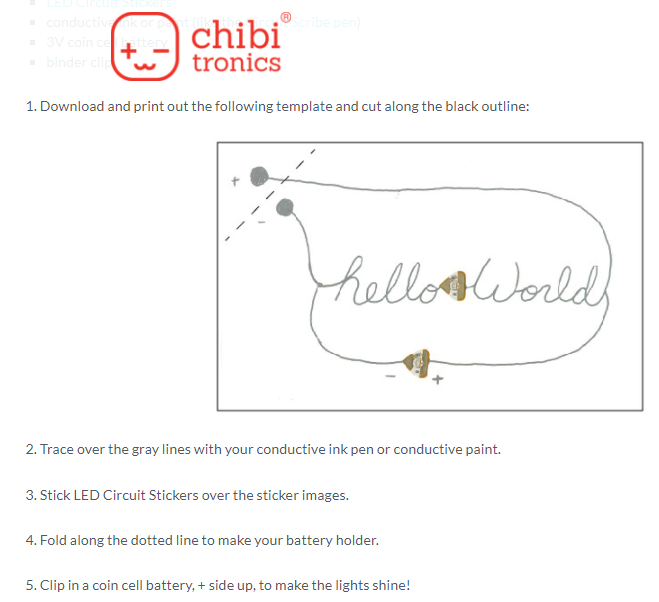
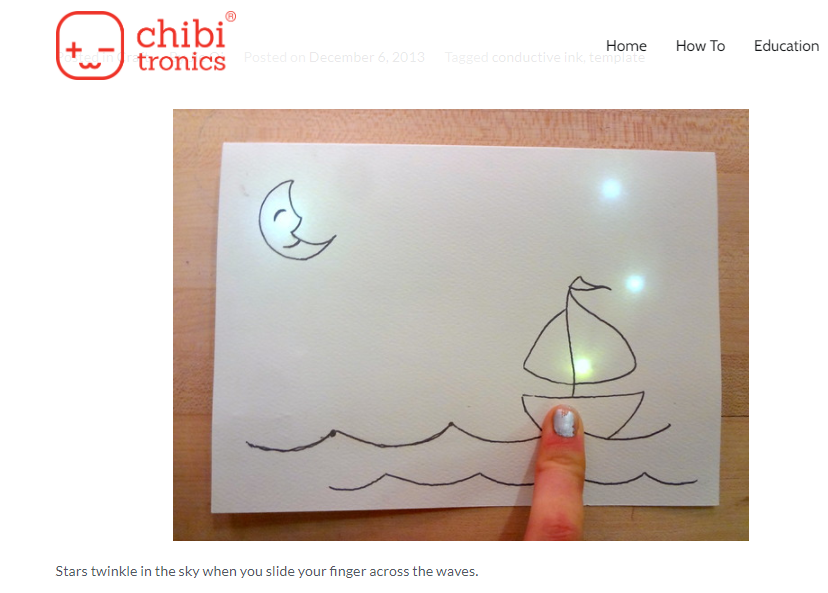
TinkerCad:
Create virtual circuits with TinkerCad Circuits. This amazing free online (cloud service) tools is stunning. You can create almost any circuit and test it. It starts with very basic circuits and then move on to programming microprocessors (Arduino Uno).

Copyright © 2023 William Van Zyl
LED LIGHTS AND CIRCUITRY (ELECTRICITY, DIAGRAMS, AND PROGRAMMING): A LED AND COPPER TAPE GREETING CARD PROJECT.
All rights reserved. This ebook or any portion thereof
may not be reproduced or used in any manner whatsoever without the express written permission of the publisher except for the use of brief quotations in a book review.
New Zealand
First Publishing – 2017
Second publishing – 2021
Edited in 2023.
However, brief quotations in a book review, references to the website, links to the website, or very short references, may be used. Links to social media websites (Facebook, Twitter, etc.) may be used. The photographs/sketches may not be reproduced.

More about the author: http://williamvanzyl.com/
Read more online: https://fivehousepublishing.com/
Thank you for your help and this post. It’s been great.
Hi Fracasso. Thanks for your comment. You are welcome. Regards. William Van Zyl (Five House Publishing).
Fracasso. Thanks for your positive comment – much appreciated. Regards. William Van Zyl (Five House Publishing).
Thank you for your post. I really enjoyed reading it, especially because it addressed my issue. It helped me a lot and I hope it will also help others.
Szumny. You are welcome. Cheers. William Van Zyl (Five House Publishing).
Your articles are extremely helpful to me. Please provide more information!
Hi Lehigh. I do have more info for you. Please search my blog posts (keywords electronics, Arduino, copper tape, circuits, and more). Thanks for commenting. Regards. William Van Zyl (Five House Publishing).